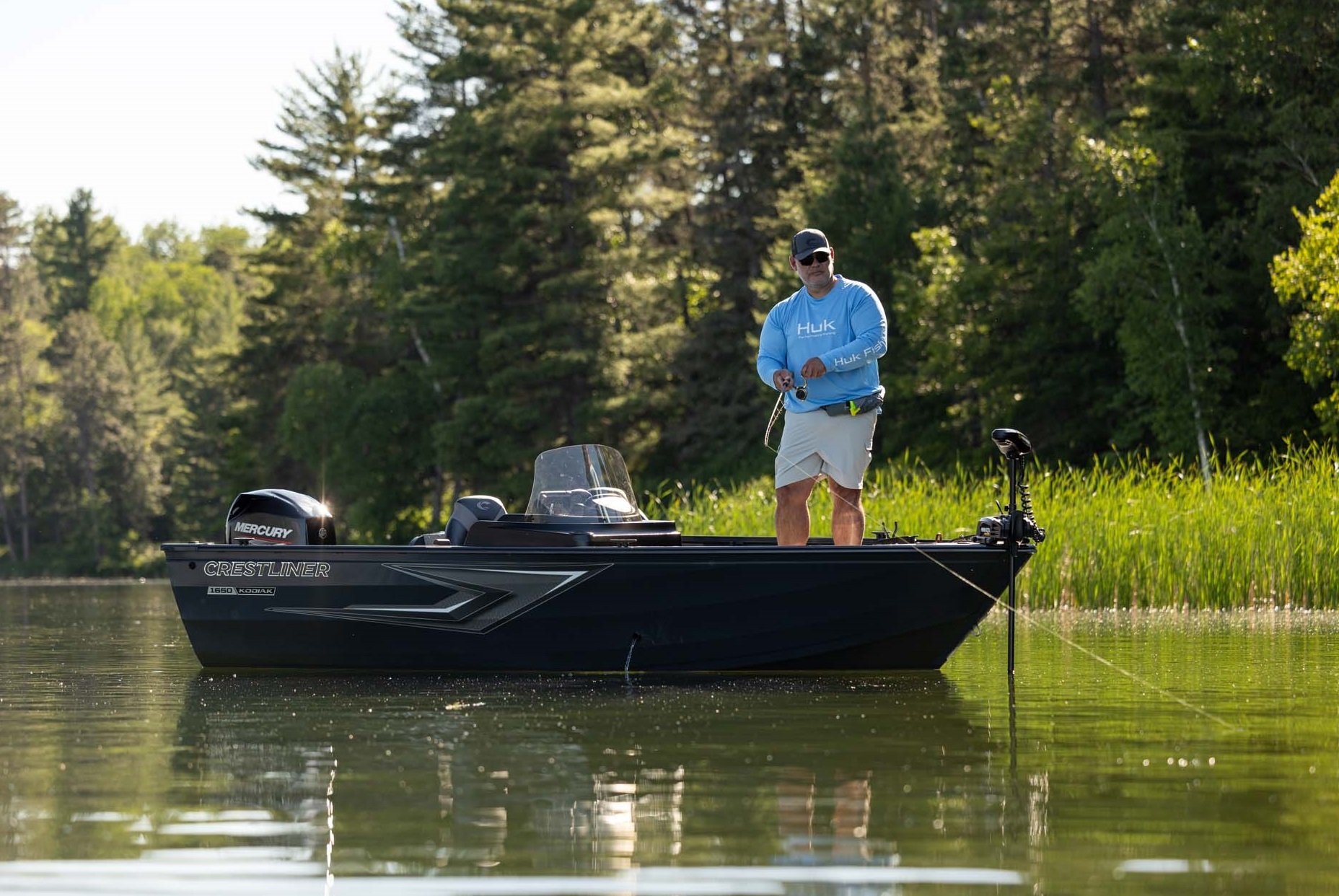-
Fishing
Fishing Performance & Comfort
-
Discovery
-
1650 Discovery Tiller
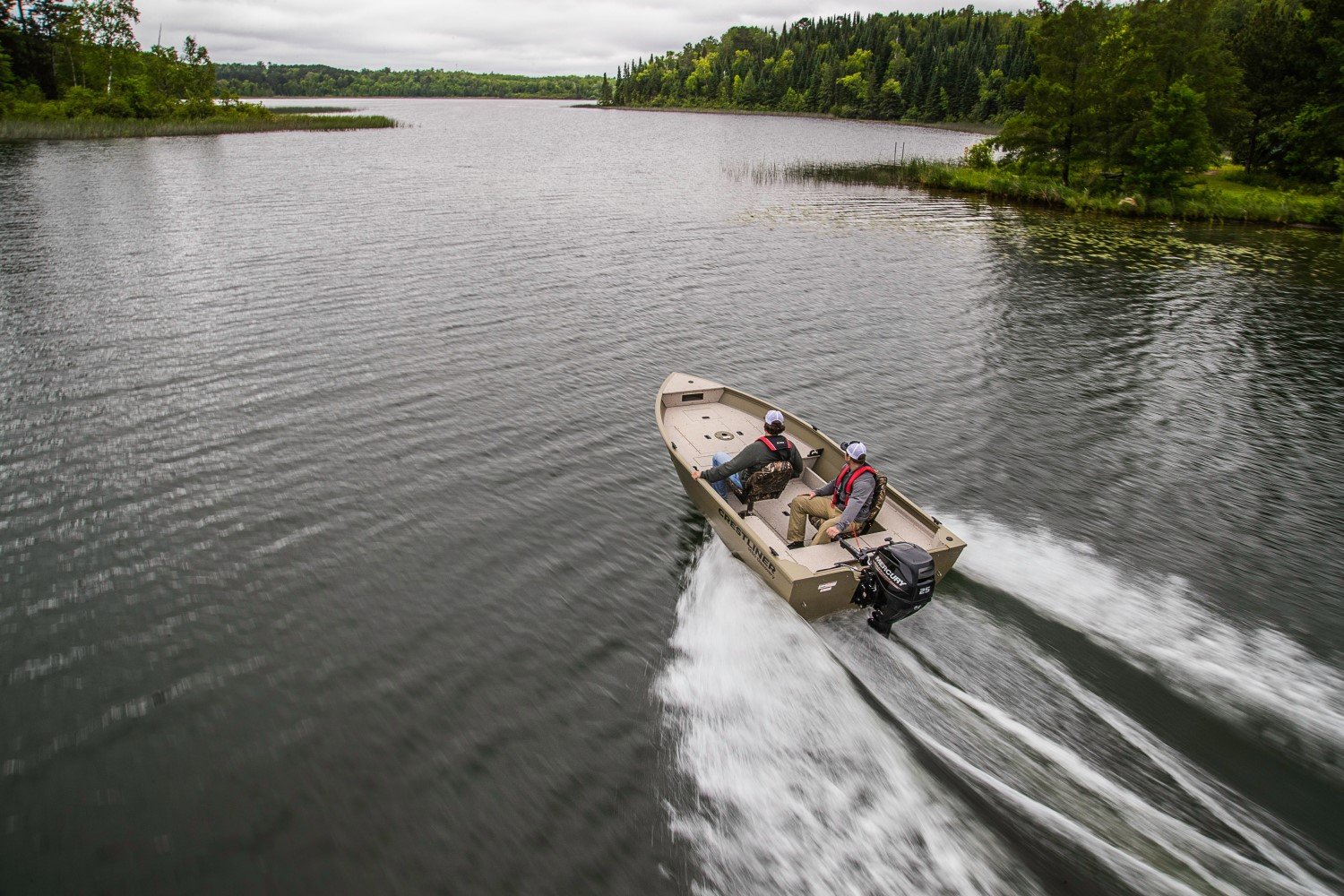
1650 DISCOVERY TILLER
STARTING AT 16683
LAYOUTLENGTH 16' 6"HP RANGE 25-60SEATING 5Discovery OverviewFor an ideal day on the water, look no further than the 1650 Discover Tiller fishing boat. Featuring plenty of livewell room, rod storage and ample room to put your stuff, the 1650 Discovery side console will help you find that ultimate fishing experience.
-
1650 Discovery Tiller
-
Kodiak
- 1650 Kodiak
-
1650 Kodiak Tiller
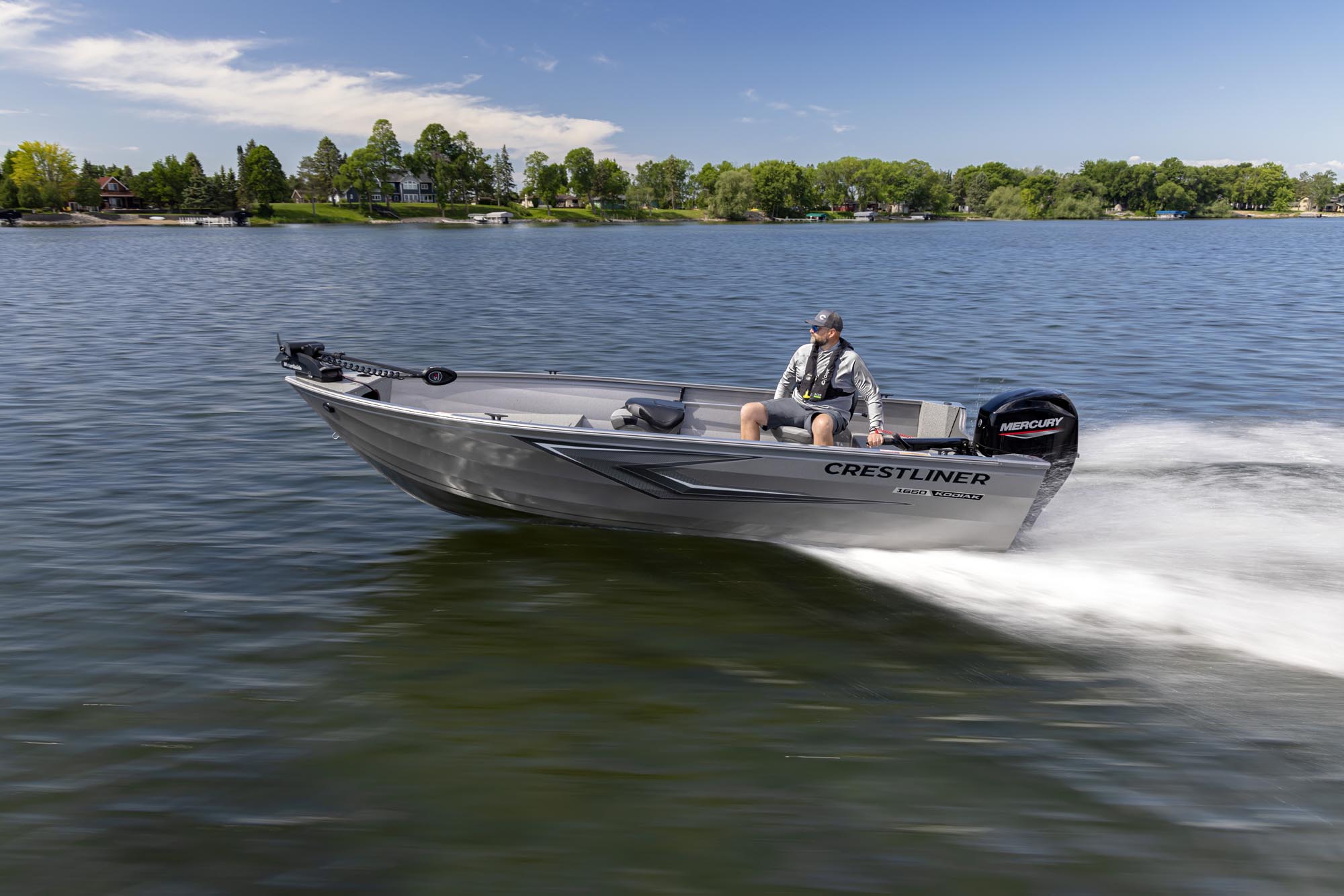
1650 Kodiak Tiller
STARTING AT 19491
LAYOUTLENGTH 16'4"HP RANGE 40-60SEATING 5For anyone from regular folks to professional guides, this boat makes anything possible on the water—from multi-species fishing to camping excursions to dock maintenance. Ideal for fish camp and resorts, long days on big water or a quick trip to the local lake, the Kodiak is ready to make any task on the water easy and enjoyable.
- 1800 Kodiak Tiller
-
Pro Tiller
-
1650 Pro Tiller
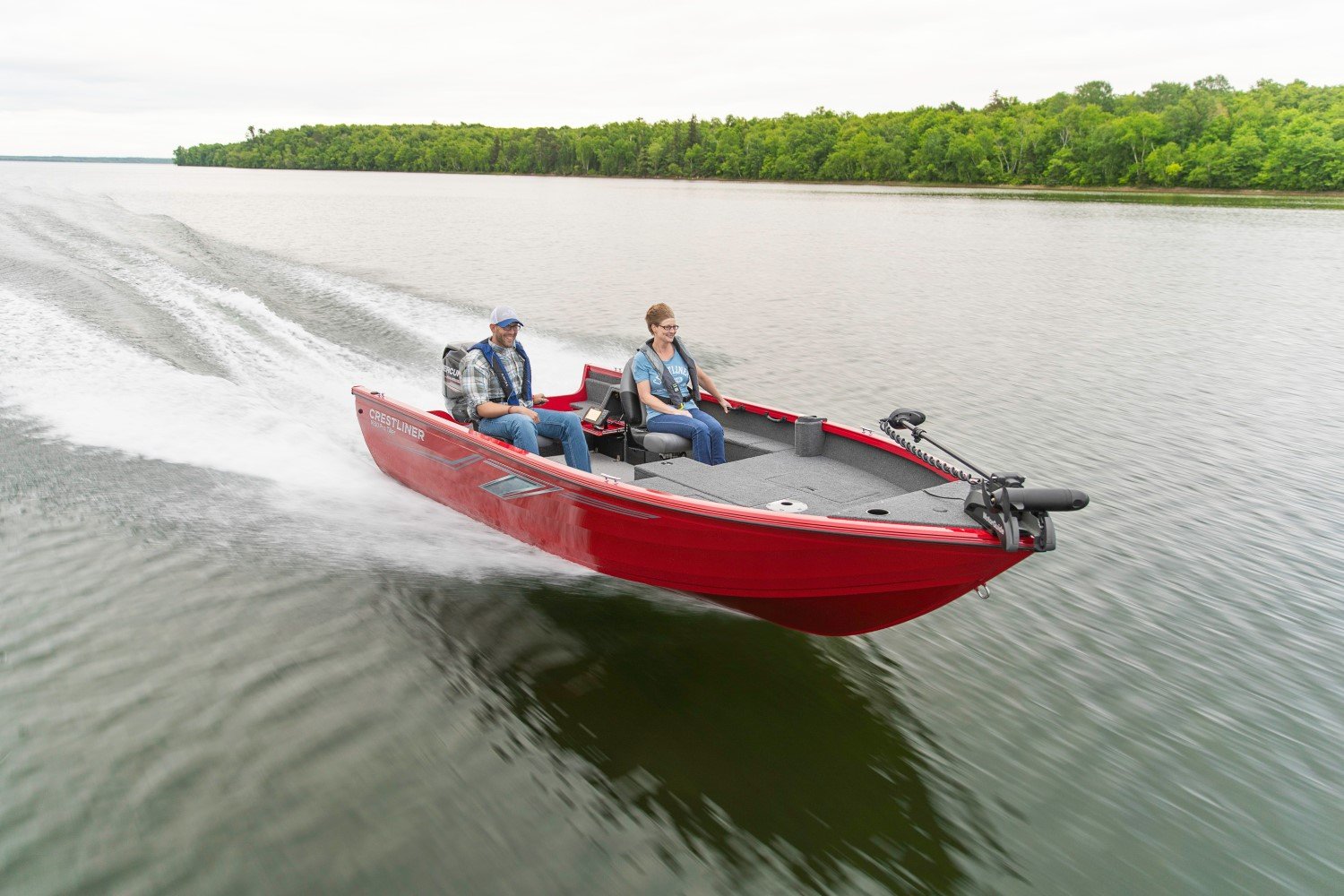
1650 PRO TILLER
STARTING AT 25843
LAYOUTLENGTH 16' 10"HP RANGE 50-75SEATING 6Pro Tiller OverviewThe Crestliner 1650 Pro Tiller is great for easily navigating any body of water in search of the perfect catch. With ample casting space and well-placed livewell and baitwell, you’ll have everything you need close by when the bite is on.
-
1750 Pro Tiller
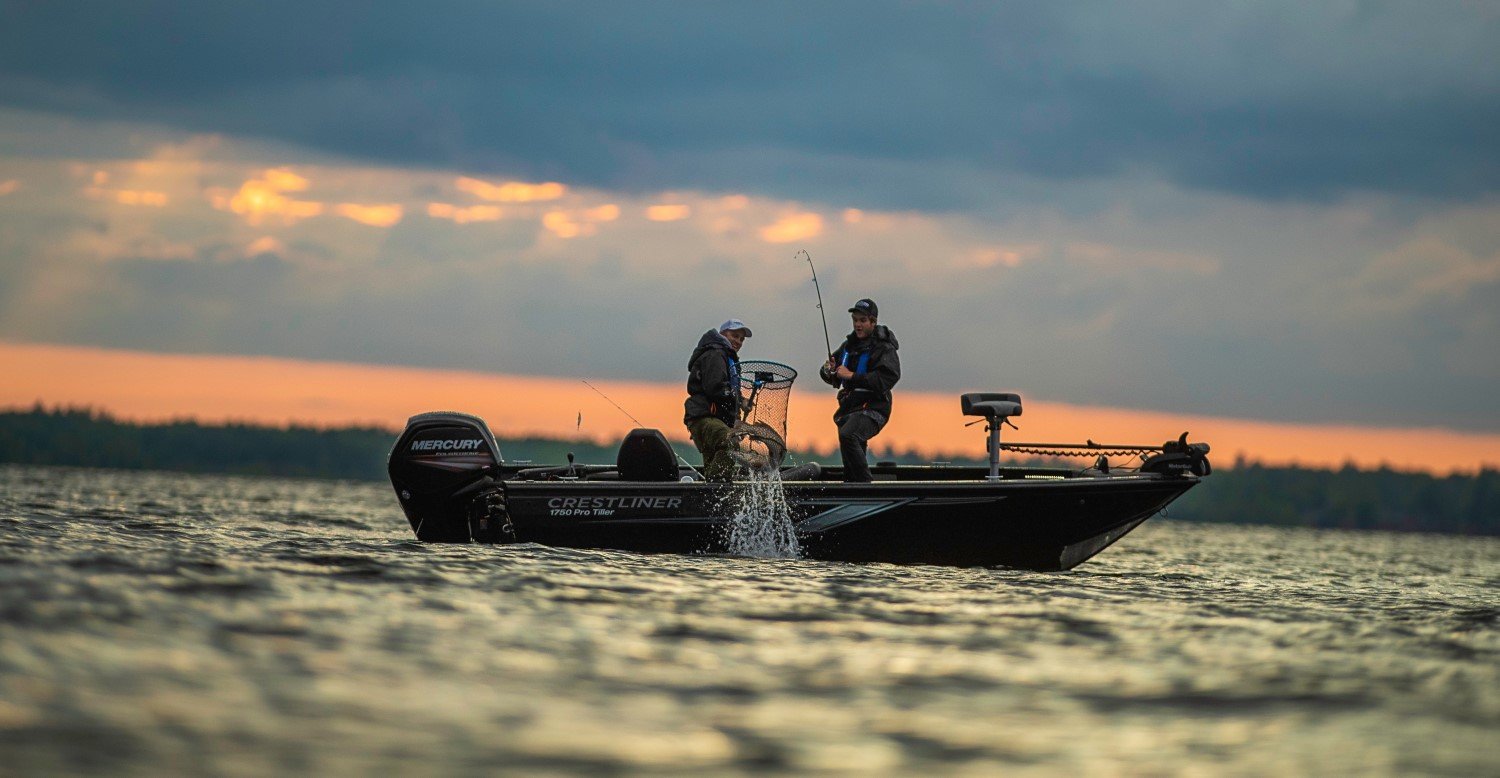
1750 PRO TILLER
STARTING AT 40024
LAYOUTLENGTH 17' 6"HP RANGE 0-90SEATING 6Pro Tiller OverviewStep into the 1750 Pro Tiller and steer it towards your next catch. This aluminum tiller boat is spacious enough to comfortably cast with the maneuverability and control of a tiller motor you can get to just about any spot on your favorite body of water.
-
1850 Pro Tiller
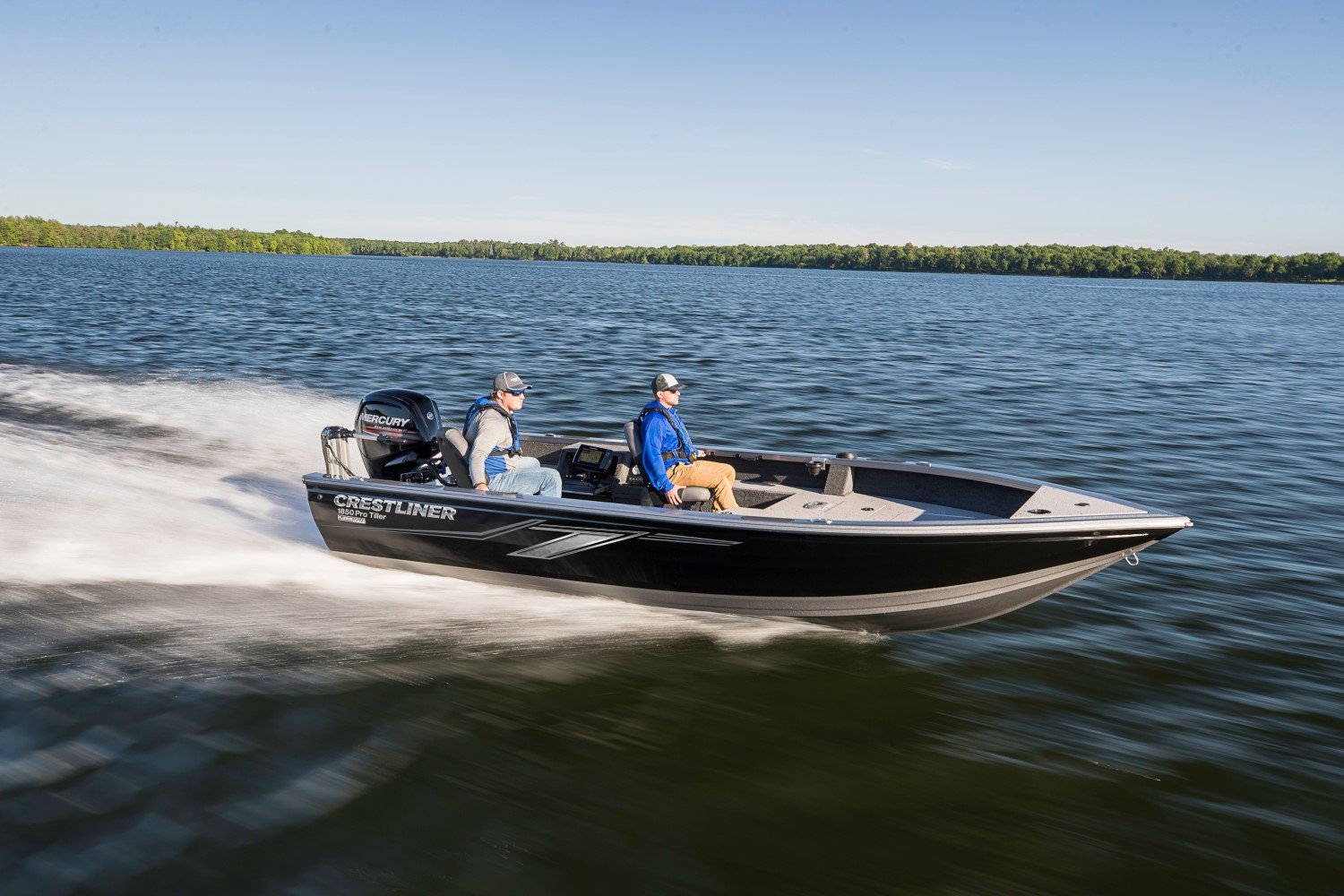
1850 PRO TILLER
STARTING AT 42049
LAYOUTLENGTH 18' 6"HP RANGE 0-90SEATING 6Pro Tiller OverviewThe 1850 Pro Tiller has over 18 feet of angler-optimized space to reel in your next haul. This aluminum tiller boat features a spacious bow and an easy-to-use command console. The all-welded hull ensures that this boat is strong and durable so you can be relentless in the pursuit of any fish, season after season.
-
1650 Pro Tiller
-
Hawk
-
1650 Hawk
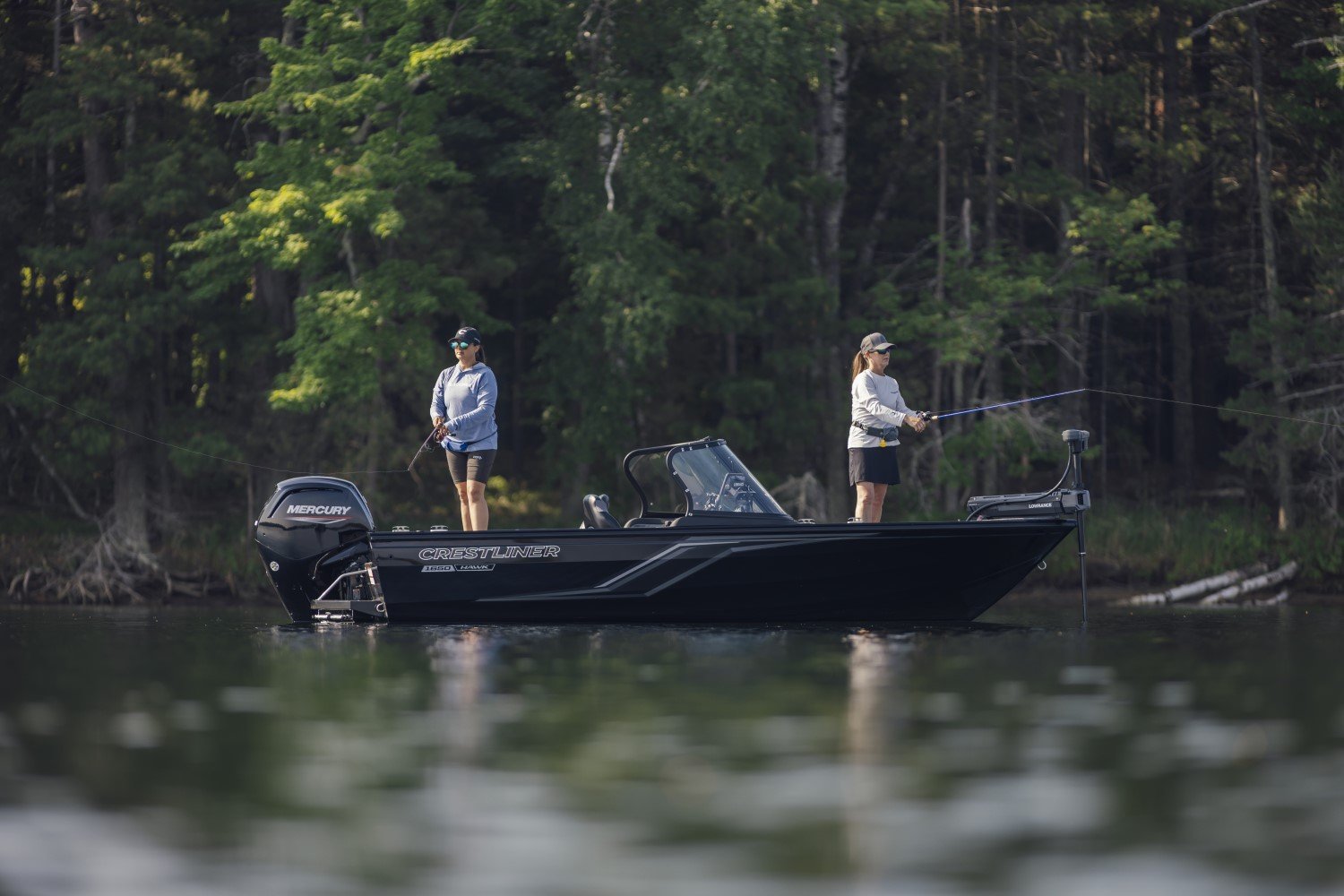
1650 Hawk
STARTING AT 26668
LAYOUTLENGTH 16' 9"HP RANGE 60-90SEATING 6Hawk OverviewThe 1650 Hawk is everything anglers and families need with a versatile, comfortable and tough all-welded design.
-
1750 Hawk
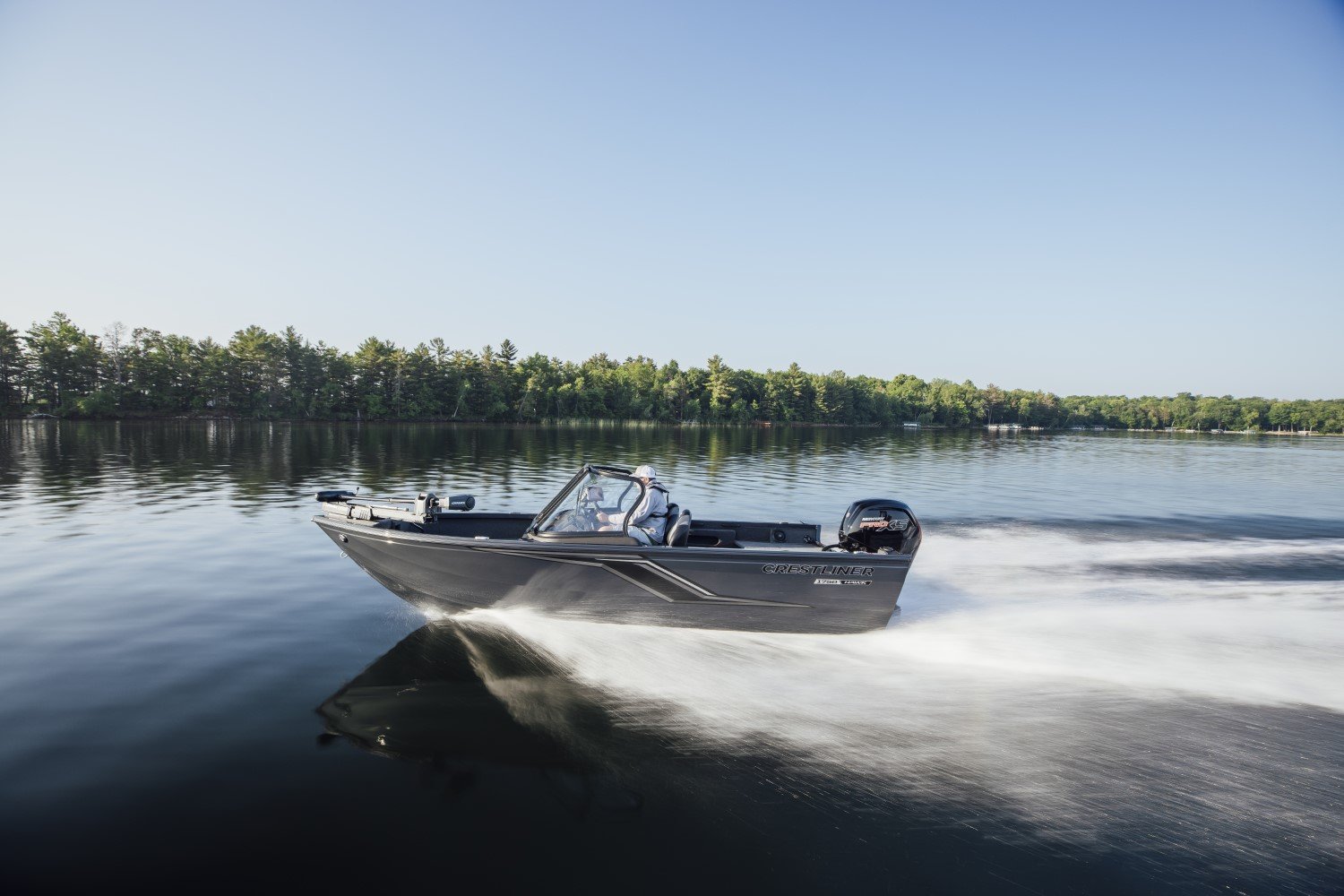
1750 Hawk
STARTING AT 29784
LAYOUTLENGTH 17' 6"HP RANGE 90-115SEATING 6Hawk OverviewThe 1750 Hawk is a versatile, durable and comfortable fishing and family fun boat for anyone who loves the water.
-
1650 Hawk
-
Fish Hawk
-
1750 Fish Hawk
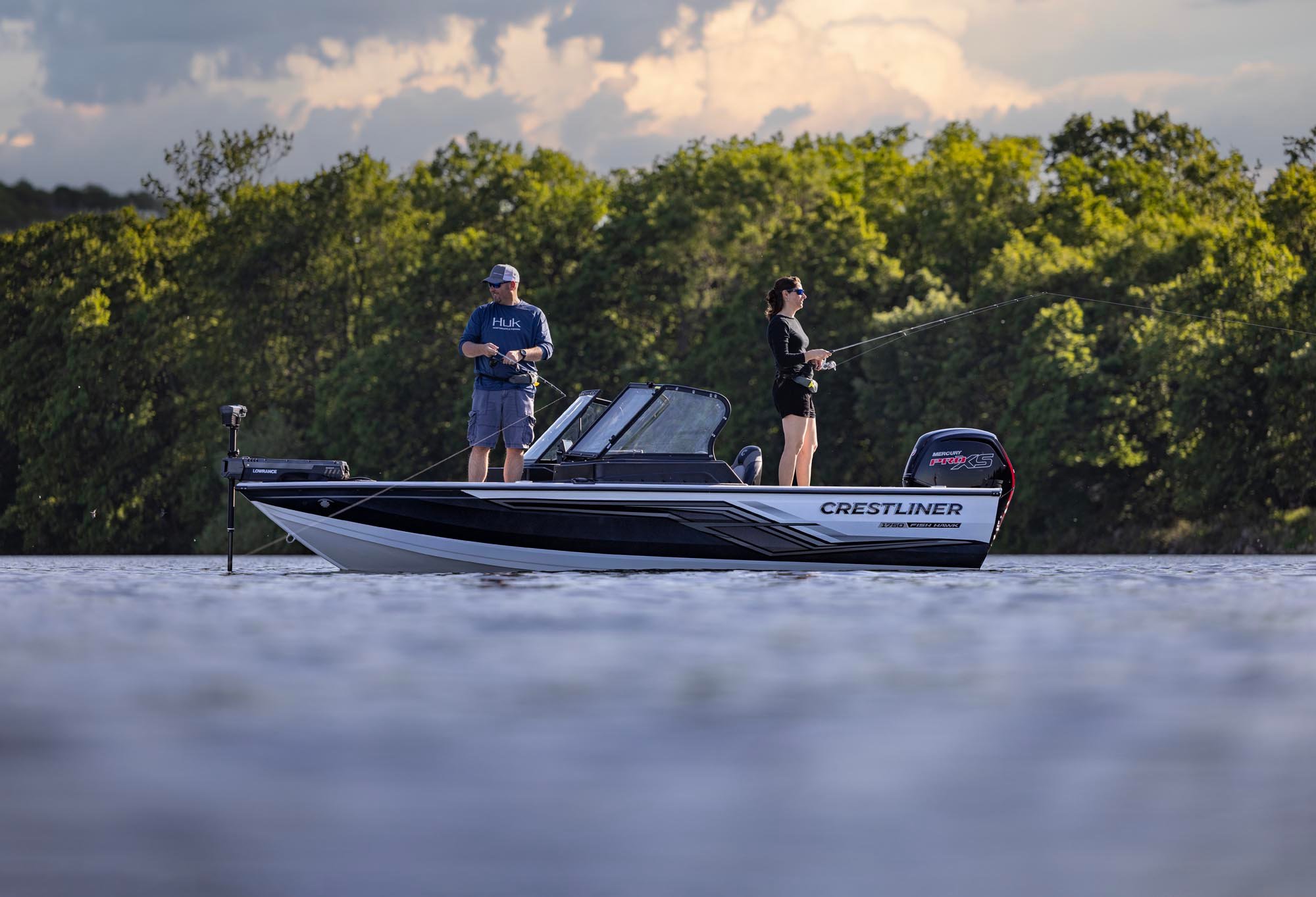
1750 Fish Hawk
STARTING AT 40566
LAYOUTLENGTH 17' 7"HP RANGE 90-150SEATING 6Fish Hawk OverviewThe 1750 Fish Hawk is one of our most capable 17' multispecies fishing boat with tons of storage and multiple livewells. The optional ski pylon gives you way to enjoy your favorite towing activities. The easy maintenance of all-welded strength of the Fish Hawk will give you peace of mind to focus on fishing.
-
1850 Fish Hawk
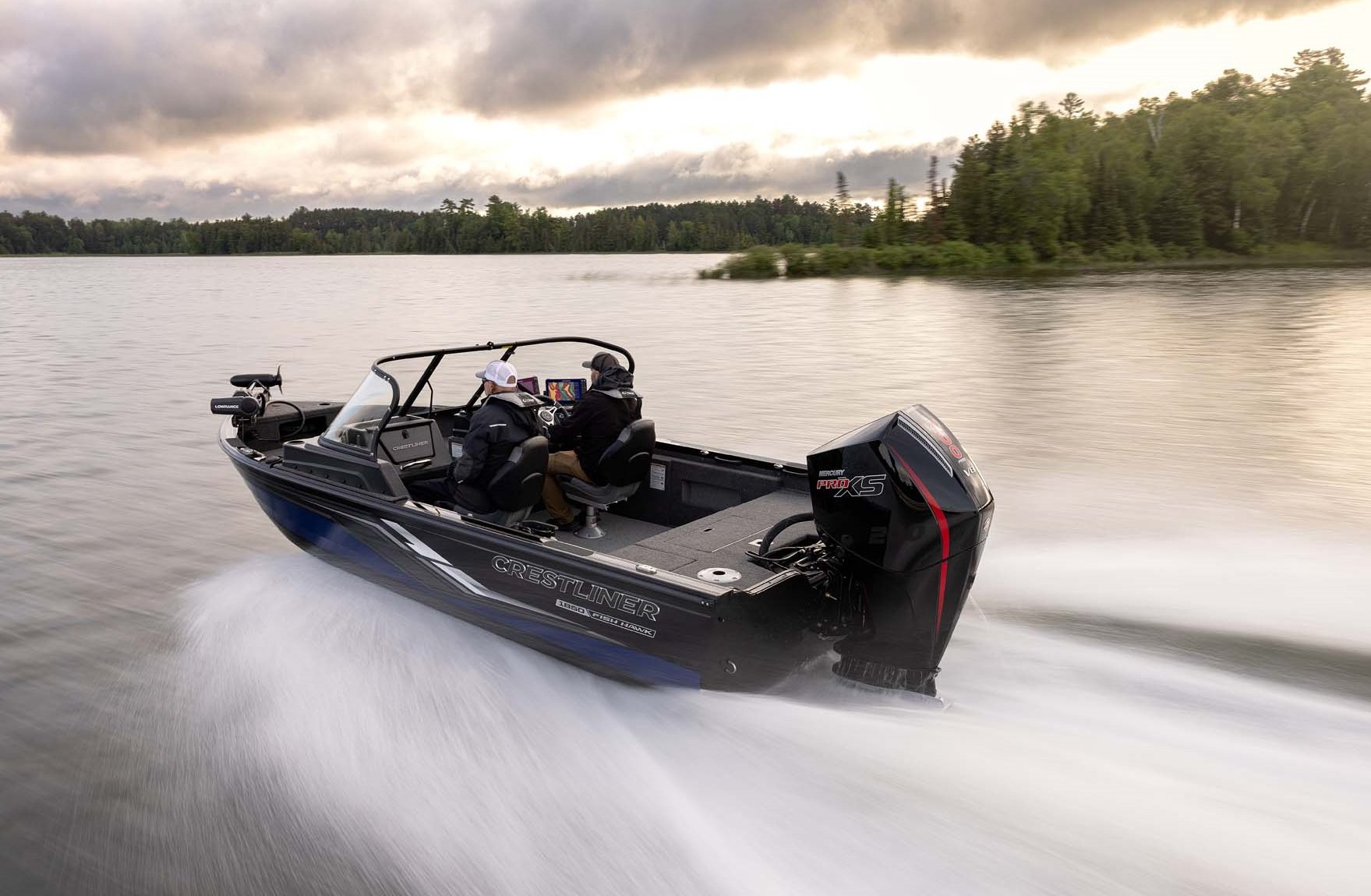
1850 Fish Hawk
STARTING AT 44723
LAYOUTLENGTH 18' 7"HP RANGE 115-200SEATING 6Fish Hawk OverviewThe 1850 Fish Hawk is the ultimate angling adventurer, giving the versatility to fish, tow or play at a moment's notice. With an AP-X Hull, this boat gives you more control, faster responsiveness and better engine performance as you cut through the water to your fishing spot.
-
2050 Fish Hawk

2050 Fish Hawk
STARTING AT 63921
LAYOUTLENGTH 20'6"HP RANGE 200-300SEATING 8Fish Hawk OverviewThe 2050 Walk-Through Fish Hawk packs years of innovations and dedicated thinking into a durable, 19-foot package. With plenty of optional features, you’ve got everything you need wrapped up in a stylish package that is uniquely your own.
-
1750 Fish Hawk
-
Discovery
-
Fish & Sport
Ski & Pylon Functionality
-
Hawk
-
1650 Hawk

1650 Hawk
STARTING AT 26668
LAYOUTLENGTH 16' 9"HP RANGE 60-90SEATING 6Hawk OverviewThe 1650 Hawk is everything anglers and families need with a versatile, comfortable and tough all-welded design.
-
1750 Hawk

1750 Hawk
STARTING AT 29784
LAYOUTLENGTH 17' 6"HP RANGE 90-115SEATING 6Hawk OverviewThe 1750 Hawk is a versatile, durable and comfortable fishing and family fun boat for anyone who loves the water.
-
1650 Hawk
-
Super Hawk
-
1750 Super Hawk
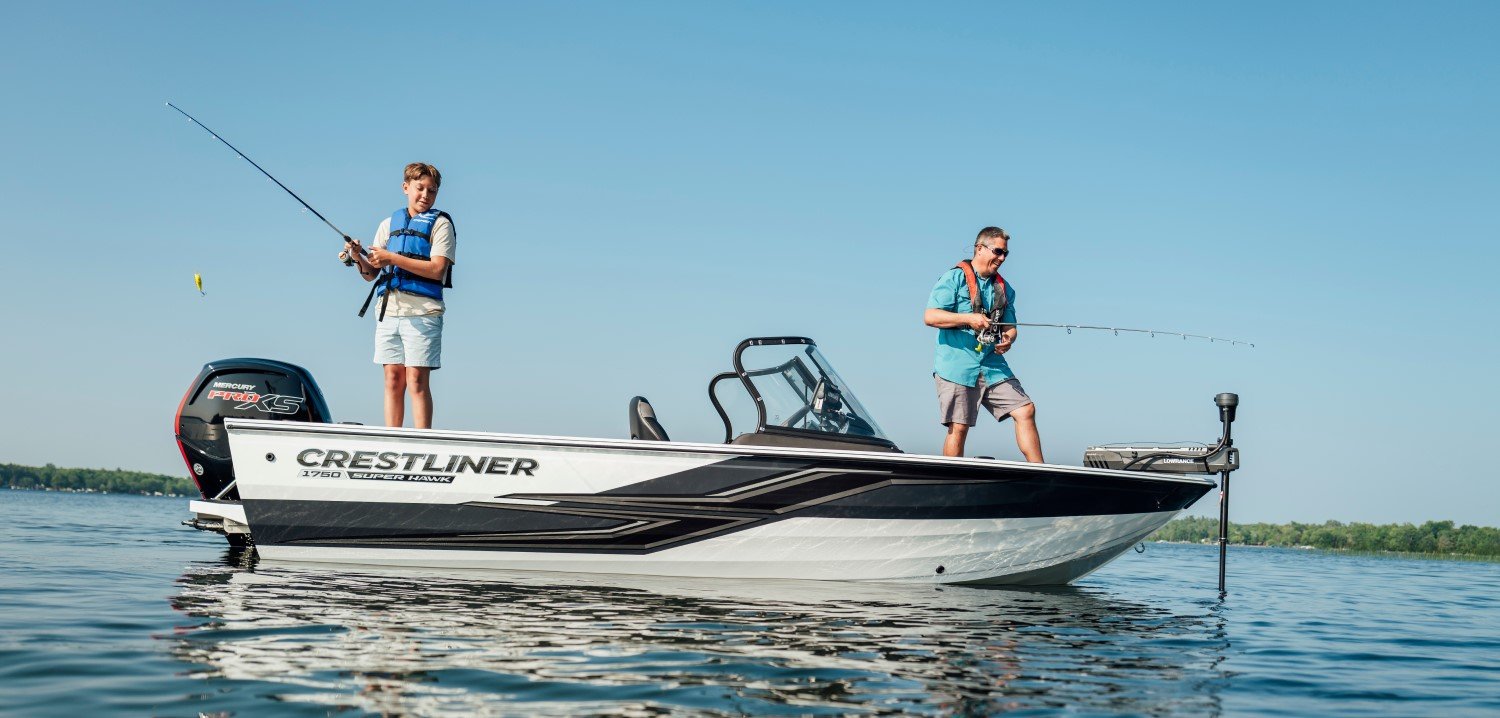
1750 Super Hawk
STARTING AT 47241
LAYOUTLENGTH 17' 9"HP RANGE 90-175SEATING 7Super Hawk OverviewWith a best-in-class conversion bow and tons of fishing features, the 1750 Super Hawk is built to fish and play.
-
1850 Super Hawk
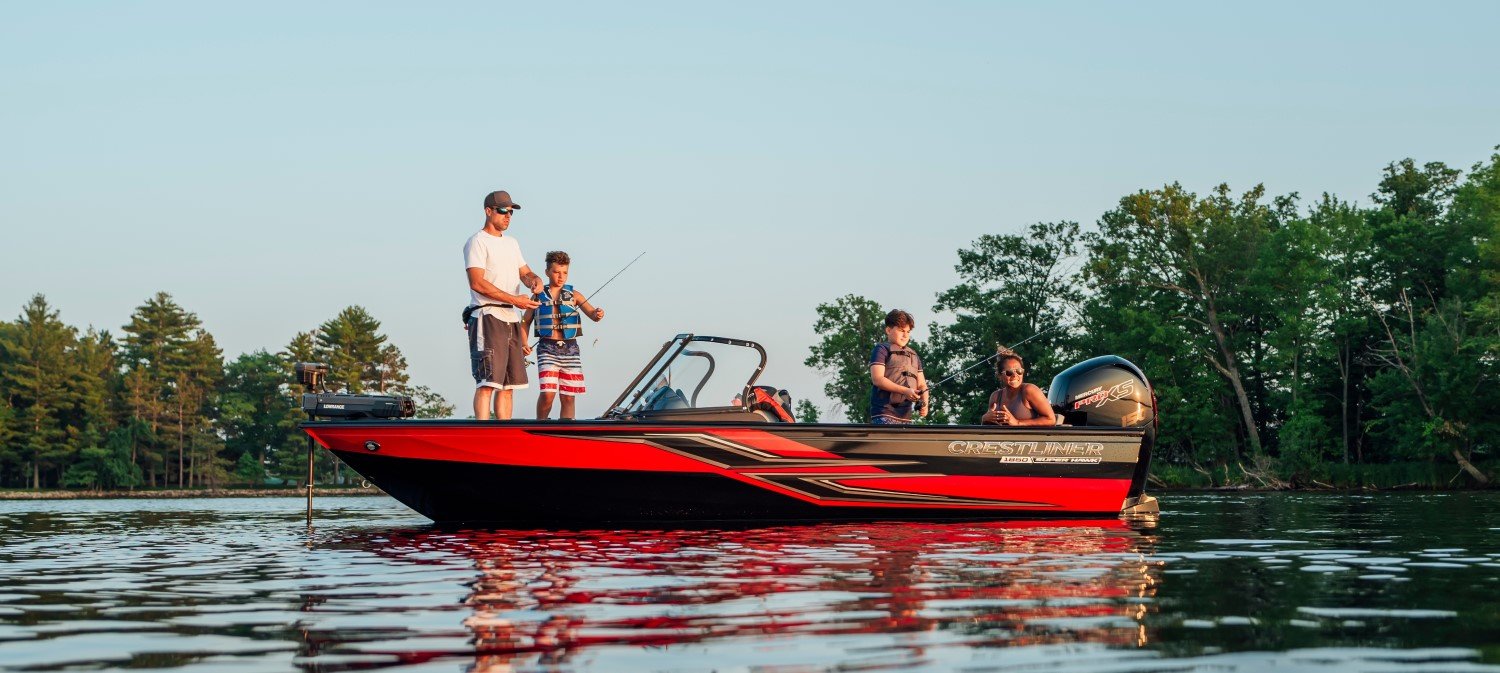
1850 Super Hawk
STARTING AT 50154
LAYOUTLENGTH 18' 9"HP RANGE 115-200SEATING 8Super Hawk OverviewThe Super Hawk 1850 features our advanced AP-X Hull for faster planing, tighter tracking and improved towing.
-
1950 Super Hawk
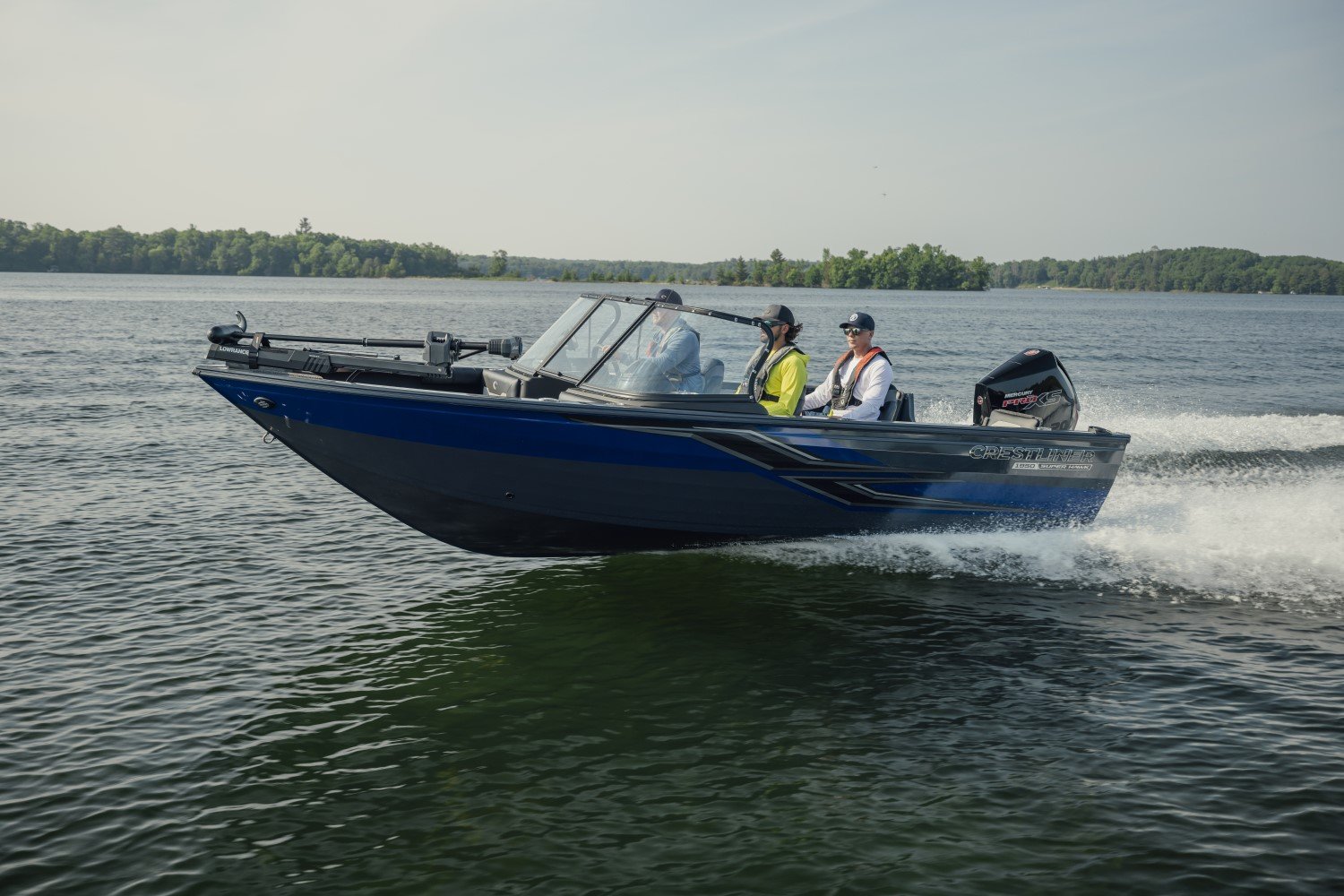
1950 SUPER HAWK
STARTING AT 62731
LAYOUTLENGTH 19' 9"HP RANGE 150-225SEATING 9Super Hawk OverviewThe Super Hawk 1950 is ready for whatever your day on the water brings, from fishing to watersports.
-
1750 Super Hawk
-
Sportfish
-
1850 Sportfish
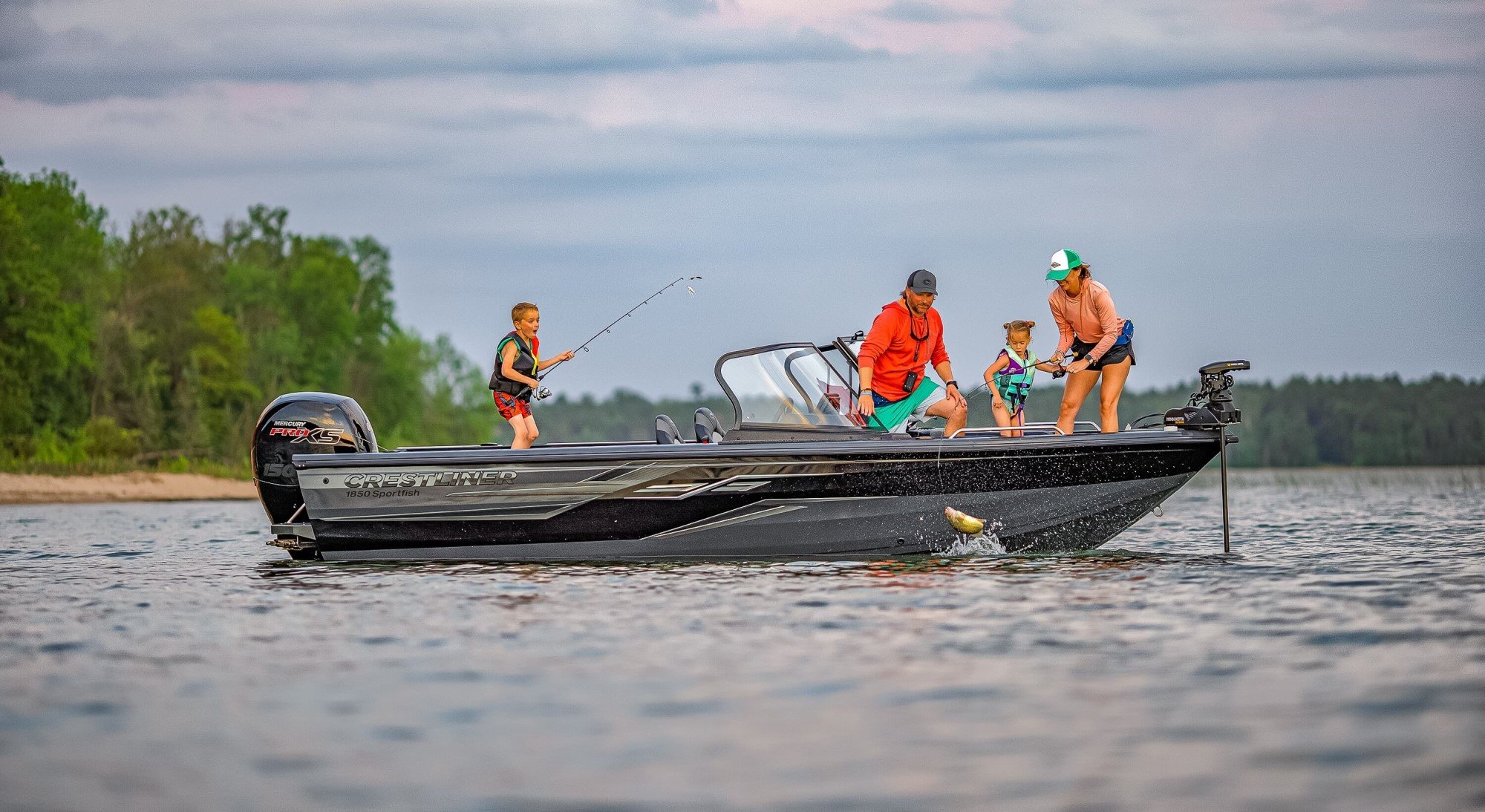
1850 SPORTFISH
STARTING AT 60255
LAYOUTLENGTH 18' 11"HP RANGE 150-200SEATING 8Sportfish OverviewOne ride in the 1850 Sportfish and you may wonder if there's anything this boat can't do. The conversion bow allows you to convert it from a fishing boat to a ski boat in a matter of seconds. Whether you decide to drop a line or cruise this aluminum fishing boat can do it all.
-
1950 Sportfish

1950 SPORTFISH
STARTING AT 64310
LAYOUTLENGTH 19' 11"HP RANGE 150-200SEATING 8Sportfish OverviewThe 1950 Sportfish gives you all the versatility and fun in a smaller package. You’ll never sacrifice features, comfort, durability or strength for size. Just like the larger boats in the family, the bow conversion bench lets you switch from family water sports to fishing in seconds.
-
2050 Sportfish
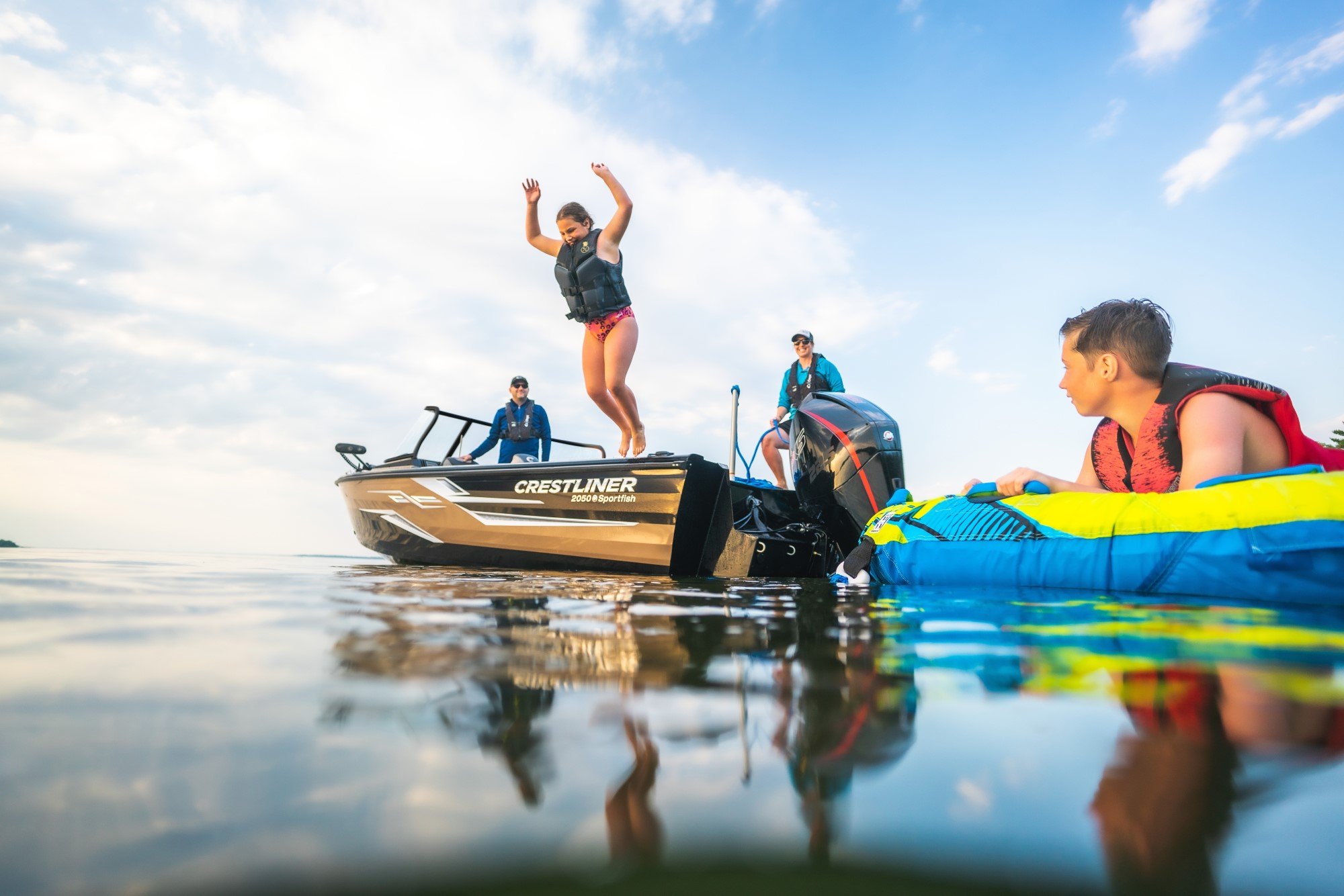
2050 SPORTFISH
STARTING AT 77621
LAYOUTLENGTH 20' 10"HP RANGE 150-225SEATING 9Sportfish OverviewIt's a sport boat. It's a fishing boat. The 2050 Sportfish handles it all with a conversion bow platform that lets you choose how to use it on any given day. Whether you're water skiing or casting a line this boat keeps you comfortable and entertained.
-
2250 Sportfish

2250 SPORTFISH
STARTING AT 89172
LAYOUTLENGTH 22' 11"HP RANGE 225-400SEATING 10Sportfish OverviewWhether you want to fish for walleye, chase muskies or wakeboard across the water the 2250 Sportfish can do it all. This premium 22' aluminum fishing boat features a versatile conversion bow making it easy to switch the Sportfish from an optimal fishing boat to a ski boat in seconds.
-
1850 Sportfish
-
Hawk
-
Big Water
Excels on Large Bodies of Water
-
Commander
-
1850 Commander

1850 COMMANDER
STARTING AT 49103
LAYOUTLENGTH 18' 8"HP RANGE 90-150SEATING 6Commander OverviewCheck out 18 feet of open-water dominance. This all-welded aluminum fishing boat is built with the kind of features anglers look for. With an aluminum console, ample rod and livewell storage and a heavy duty windshield, you’re all set to command the open water.
-
2050 Commander
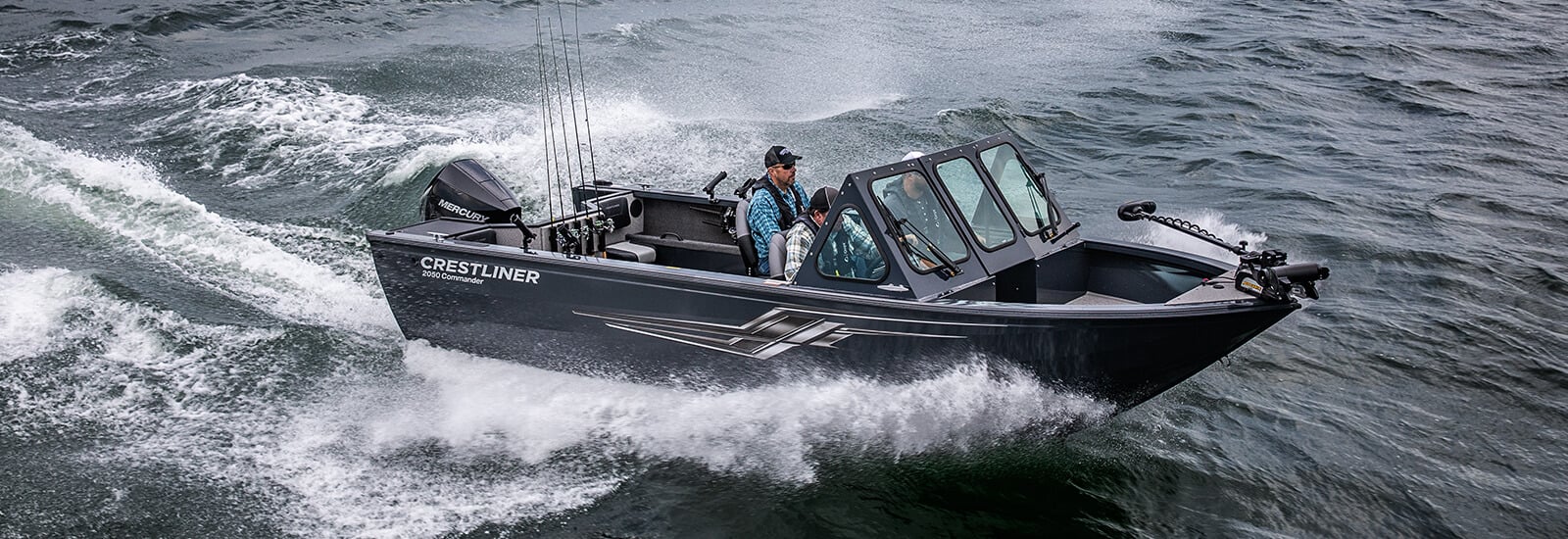
2050 COMMANDER
STARTING AT 52650
LAYOUTLENGTH 20' 8"HP RANGE 115-200SEATING 8Commander OverviewThe 2050 Commander comes fully-loaded with everything you need for a perfect day on the big water with ampt storage and 2 livewells. With its legendary all-welded aluminum hull construction, this fishing boat is able to withstand the harshness of the big, open water.
-
1850 Commander
-
Commander Elite
-
1850 Commander Elite
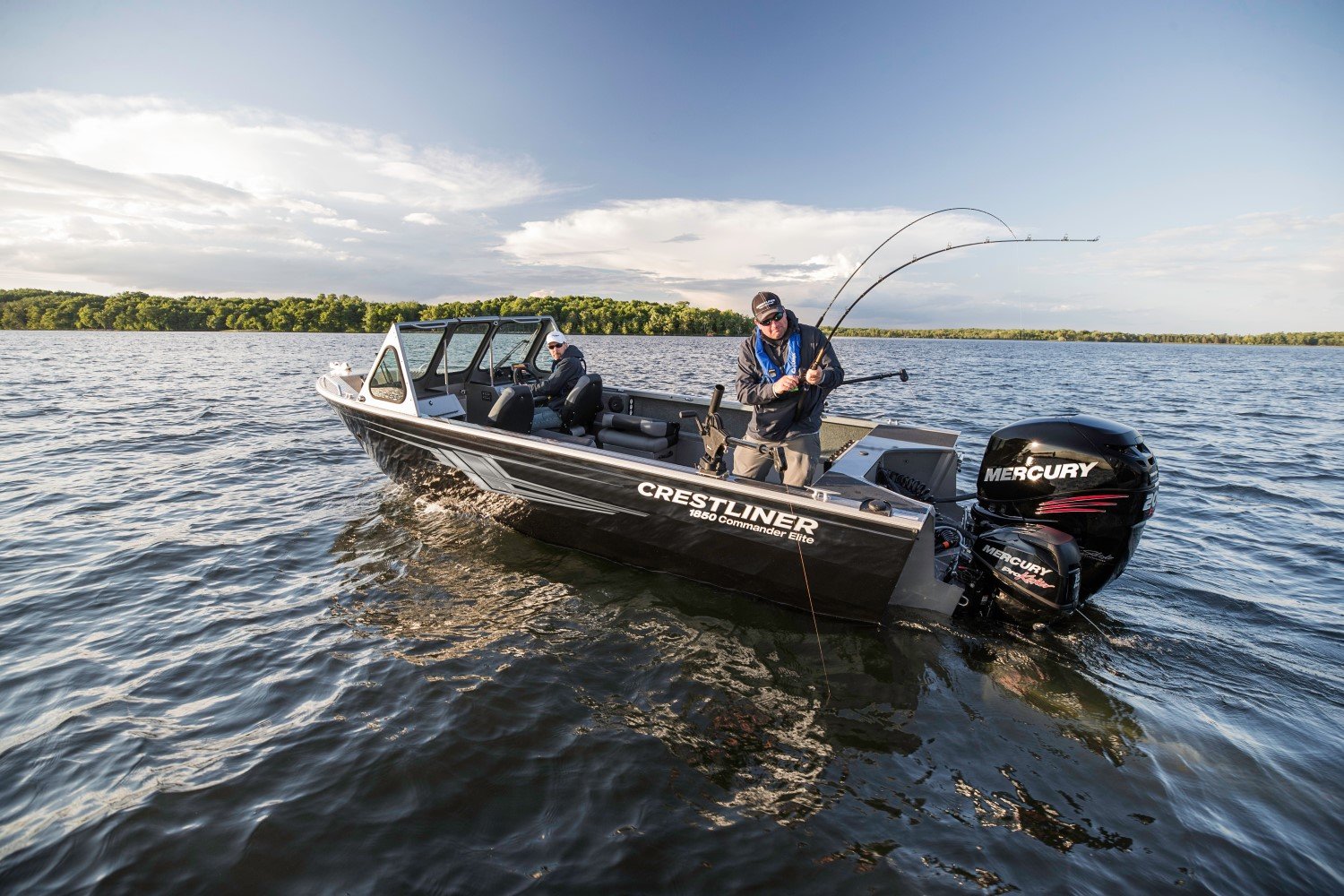
1850 COMMANDER ELITE
STARTING AT 52056
LAYOUTLENGTH 19' 7"HP RANGE 115-150SEATING 6Commander Elite OverviewFor open water fishing, the 1850 Commander Elite is tough enough to stand up to whatever Mother Nature throws at it. Bad weather, big waves—this resilient fishing boat’s all-welded aluminum hull can take the beating and keep moving towards your favorite fishing spot.
-
2050 Commander Elite
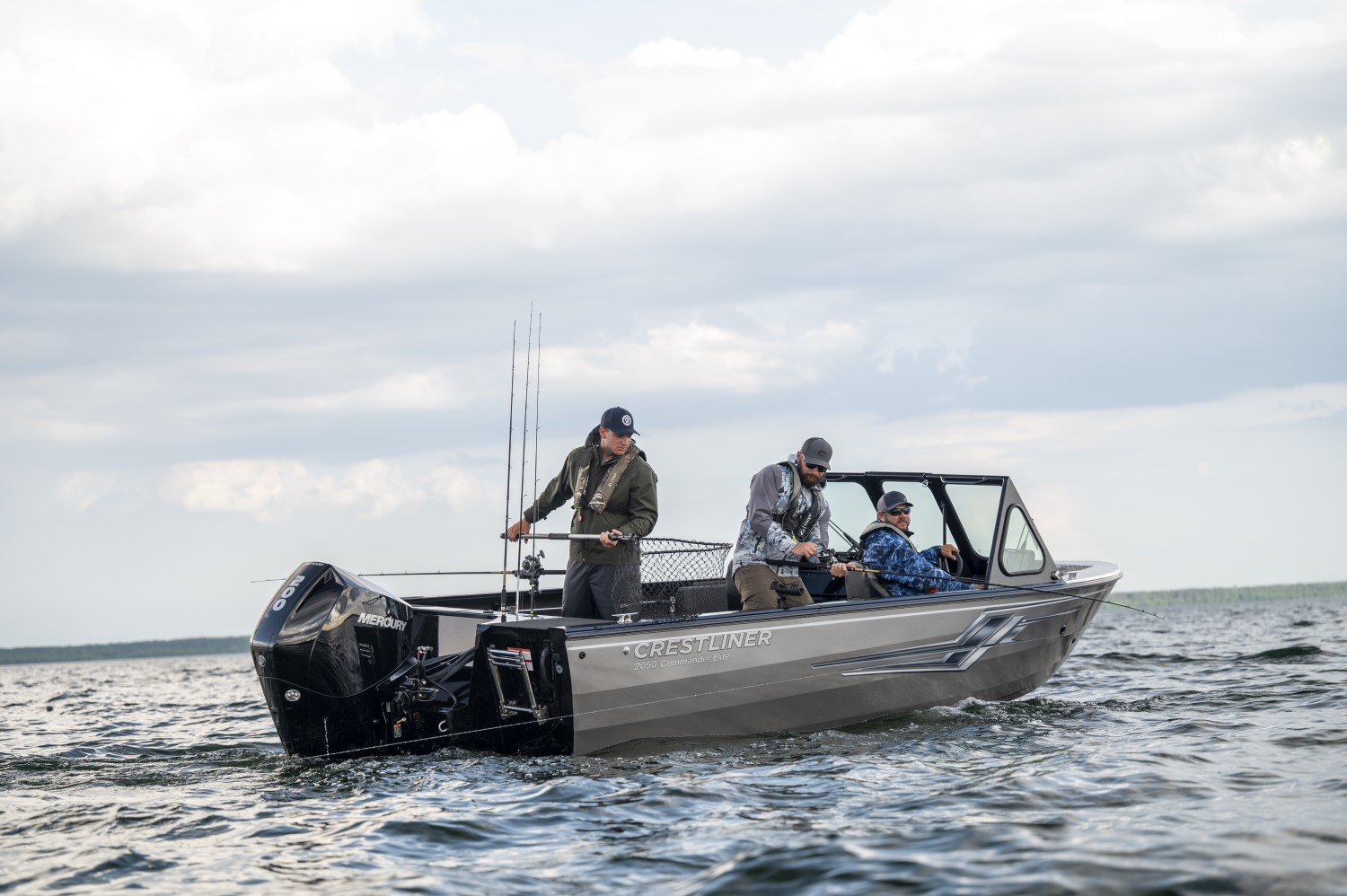
2050 COMMANDER ELITE
STARTING AT 56520
LAYOUTLENGTH 21' 7"HP RANGE 115-200SEATING 8Commander Elite OverviewThe 2050 Commander Elite is built to do more than simply handle rough waters. Everything on this aluminum fishing boat is purpose-built to catch fish. The diamond plating on the bow provides an increased layer of durability, so if you're looking to fish way offshore, see yourself in a Commander Elite.
-
1850 Commander Elite
-
Authority
-
2050 Authority
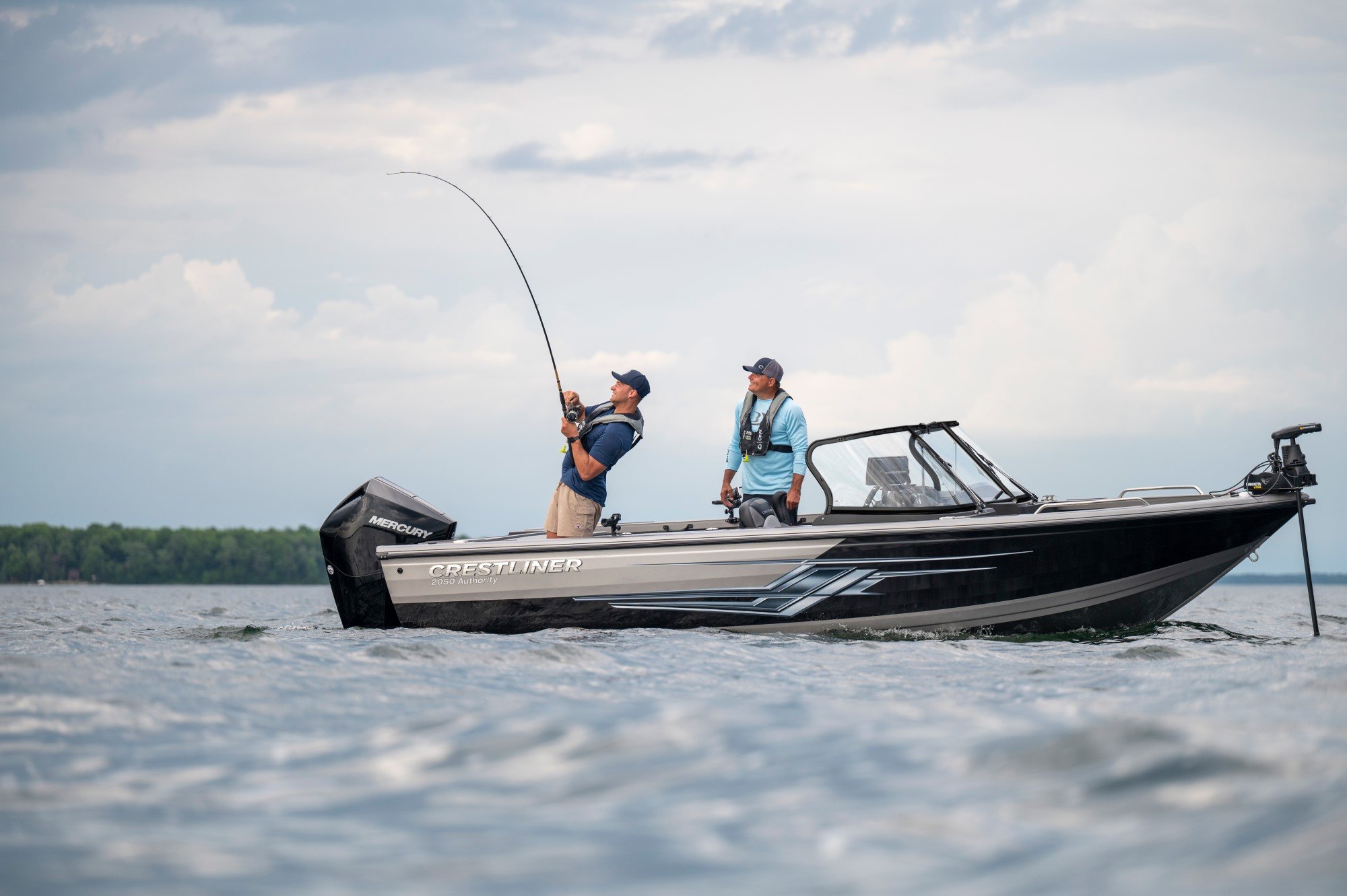
2050 AUTHORITY
STARTING AT 72887
LAYOUTLENGTH 20' 10"HP RANGE 150-225SEATING 9Authority OverviewThis Deep-V fishing boat has all the right features to make sure your day on the open water is a good one. Built with a durable, all-welded aluminum hull, the 2050 Authority will help get you through the rough stuff so you can find the perfect spot to throw a line.
-
2250 Authority
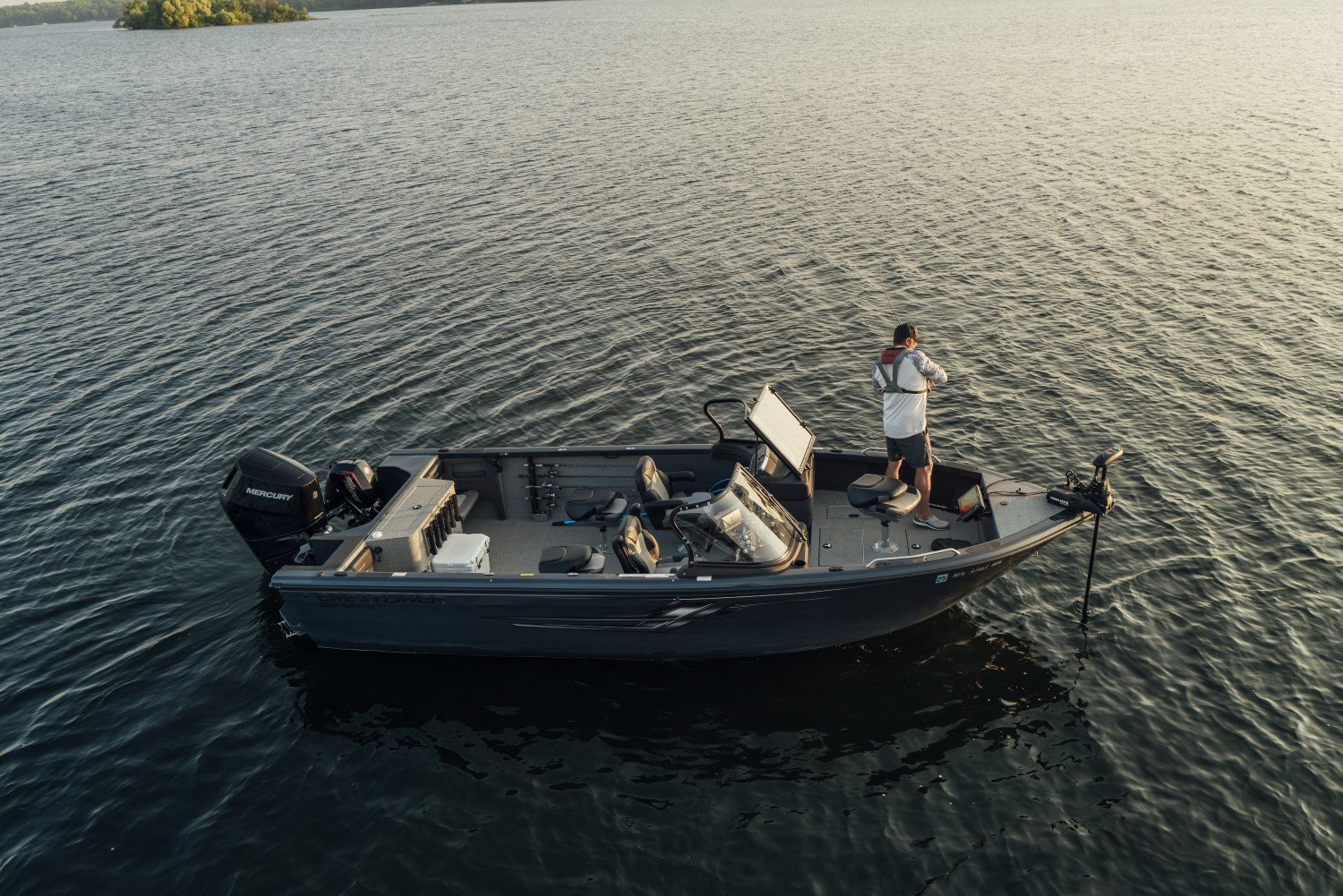
2250 AUTHORITY
STARTING AT 84734
LAYOUTLENGTH 22' 11"HP RANGE 175-400SEATING 10Authority OverviewBig water is home to some pretty big fish, and you'll need a boat that can keep up. Built to handle rough, choppy water, the durable all-welded aluminum hull of this big-water fishing boat will help guide you toward all the fish.
-
2050 Authority
-
Commander
-
Bass & Crappie
Perfect for shallow-water fishing
-
Storm
-
1600 Storm
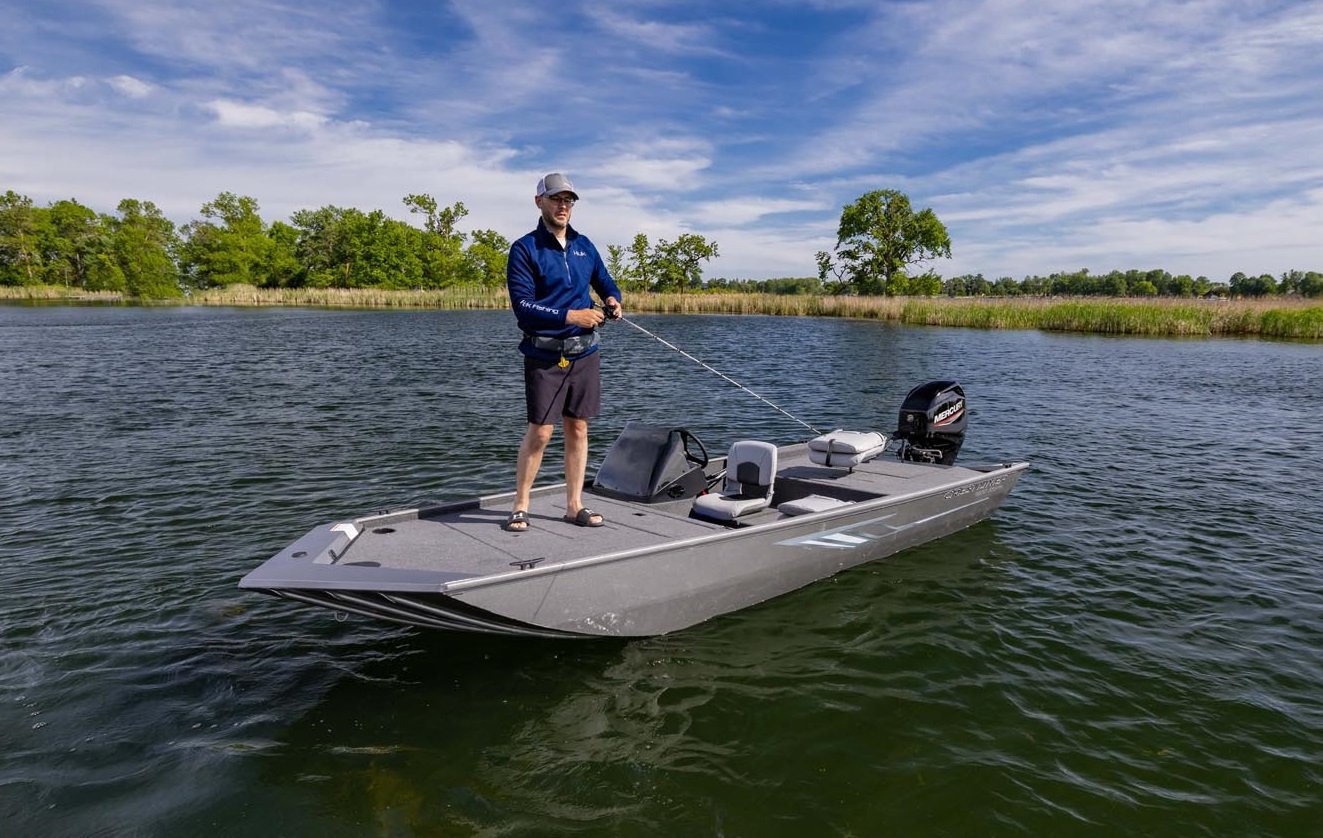
1600 STORM
STARTING AT 16483
LAYOUTLENGTH 16'HP RANGE 20-50SEATING 3Storm OverviewVersatility meets value in the 1600 Storm. It starts with a durable, all-welded aluminum Mod-V hull and continues throughout this multispecies fishing boat. With tons of storage and standard tech, this boat ensures a great day of fishing.
-
1700 Storm
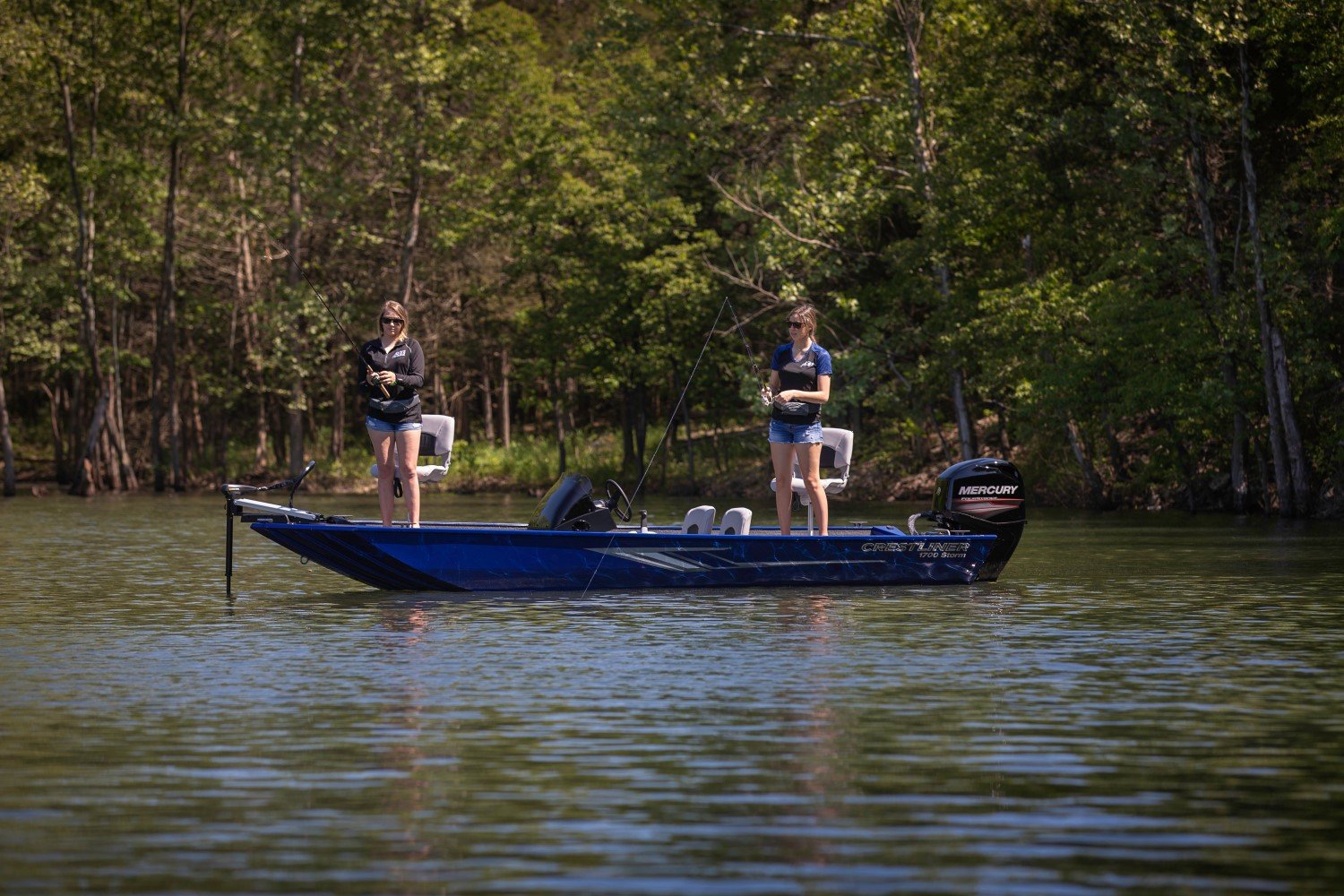
1700 STORM
STARTING AT 17116
LAYOUTLENGTH 17'HP RANGE 20-60SEATING 4Storm OverviewFeaturing an ultra-durable all-welded aluminum hull and ample room to sit, this aluminum panfish boat is built to last and priced right. Whether you’re casting for bluegill or rigging for crappie, the 1700 Storm is the ideal boat for anglers who want a simple, comfortable fishing experience.
-
1600 Storm
-
Outlook
-
1657 Outlook SS

1657 OUTLOOK SS
STARTING AT 21458
LAYOUTLENGTH 16'HP RANGE 25-50SEATING 4Outlook OverviewThe 1657 Outlook delivers an optimal on-the-water experience. This dependable stick steer aluminum boat gives you complete steering control, and by driving closer to the front of the boat, you offset weight from the stern for an unobstructed view of your environment.
-
1657 Outlook SS
-
Ridge
-
1700 Ridge
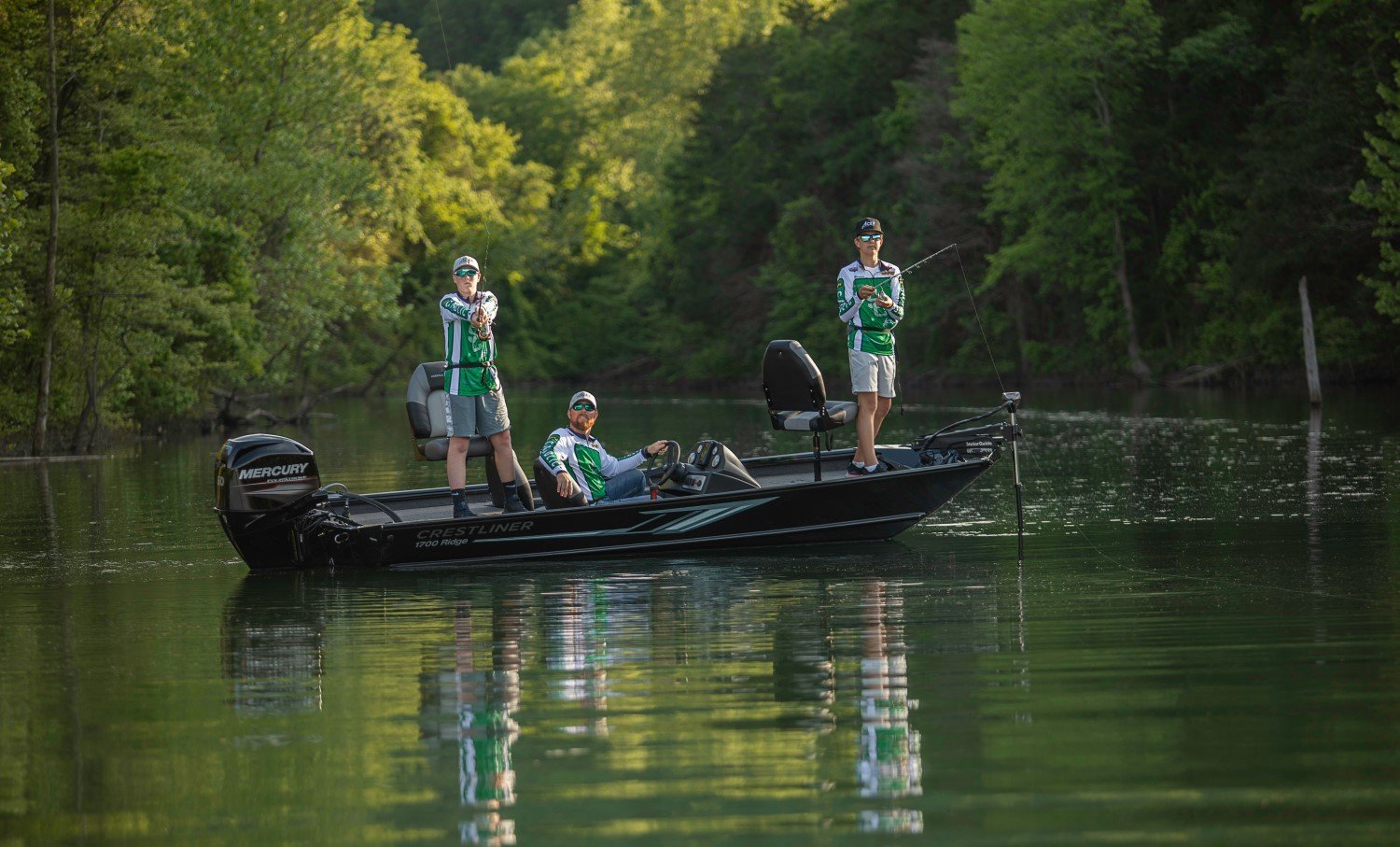
1700 RIDGE
STARTING AT 20956
LAYOUTLENGTH 16' 11"HP RANGE 40-75SEATING 4Ridge OverviewStep into the 1700 Ridge, start the motor and prepare to catch any bass or crappie in your path. This shallow water fishing boat is built with Crestliner’s signature all-welded aluminum construction that gives it plenty of strength and durability so you can go where others can't.
-
1700 Ridge
-
XF
-
XF 179
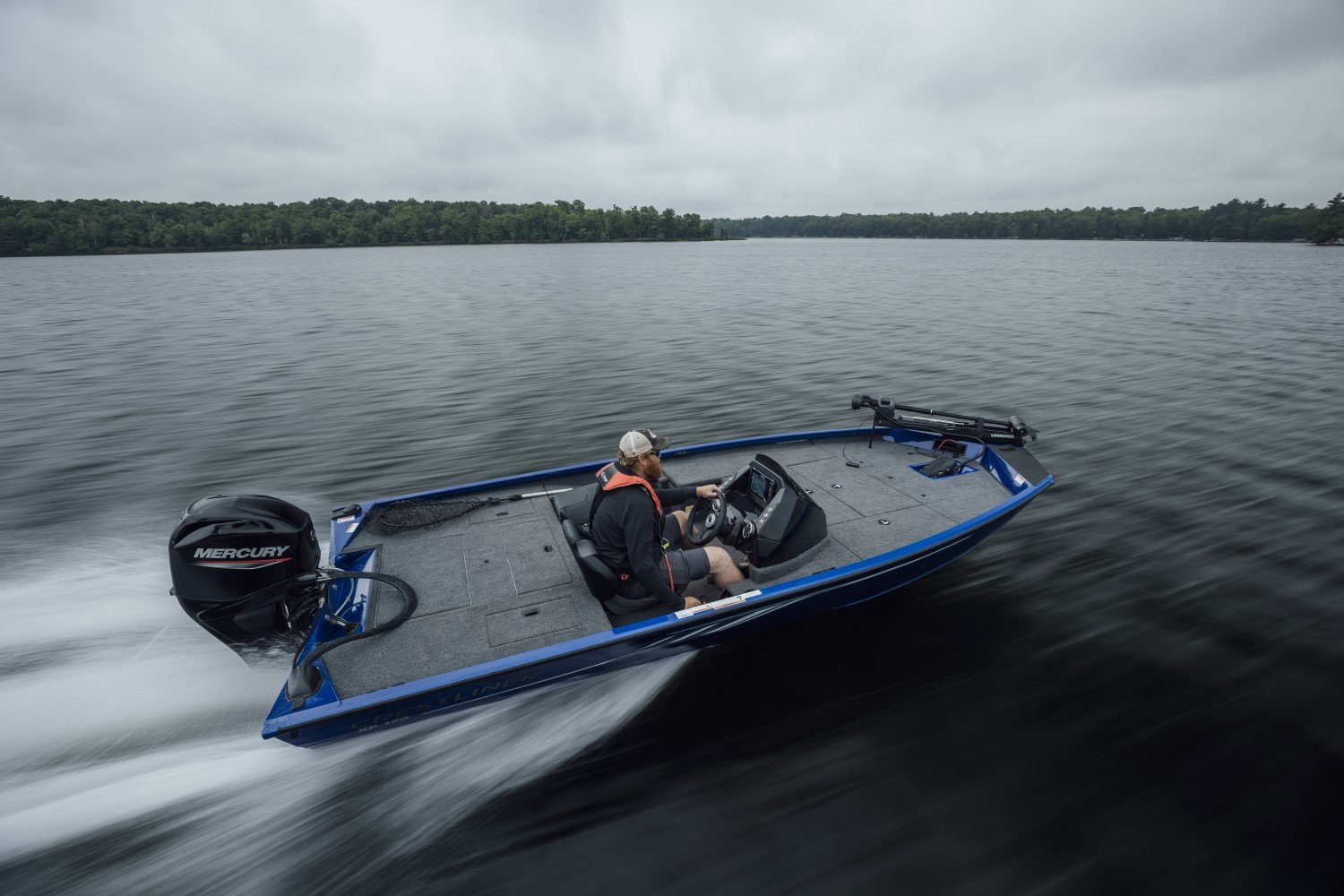
XF 179
STARTING AT 24509
LAYOUTLENGTH 17' 8"HP RANGE 60-90SEATING 4XF OverviewBuilt specifically to catch crappie and bass, the XFC 179 has the fishing and performance features to get the fish.
-
XF 189
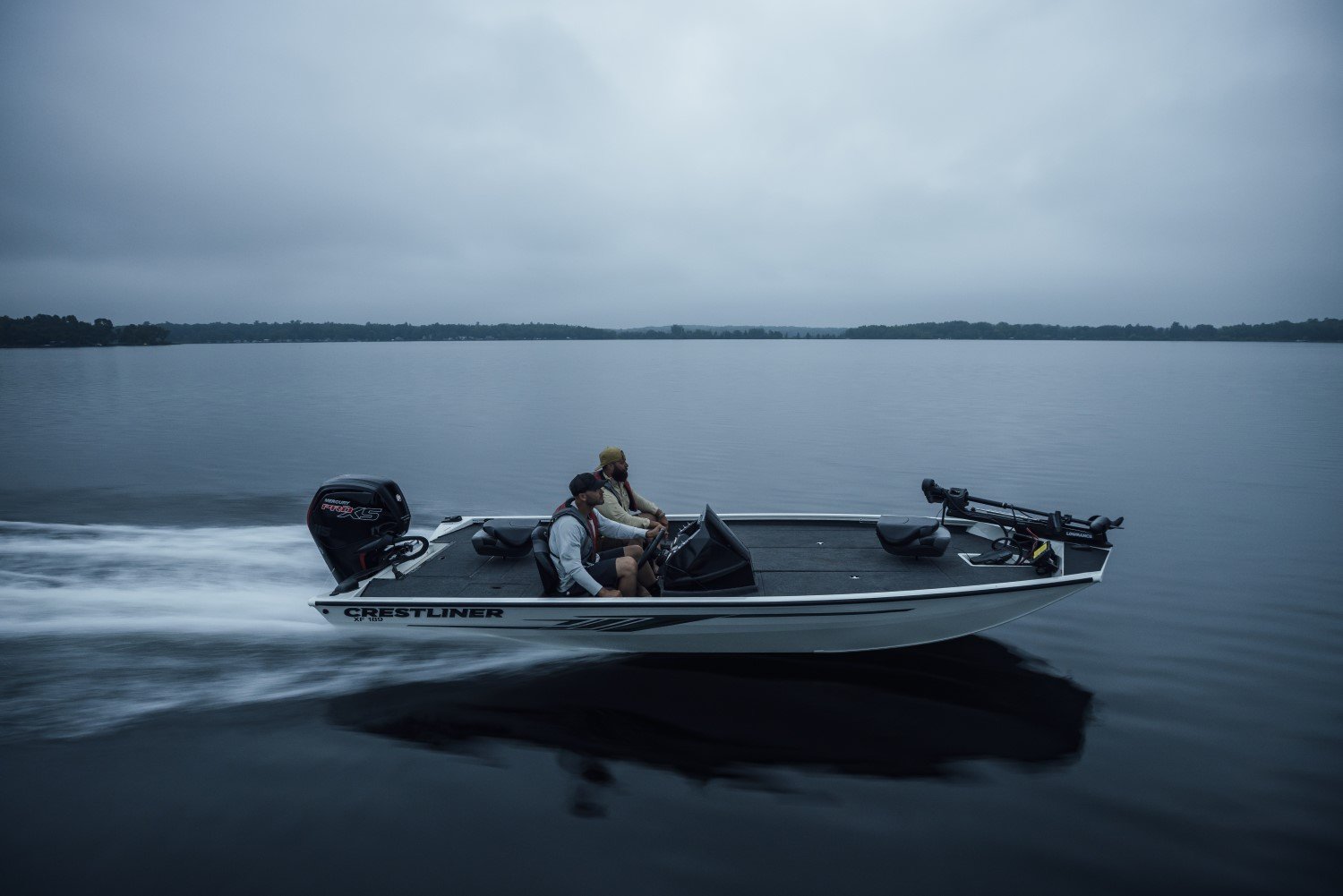
XF 189
STARTING AT 28129
LAYOUTLENGTH 18' 10"HP RANGE 60-150SEATING 4XF OverviewThe XFC 189 crappie-fishing boat is equipped with a huge bow, 3-across seat bases and dual livewells.
-
XF 179
-
XFC
-
XFC 179
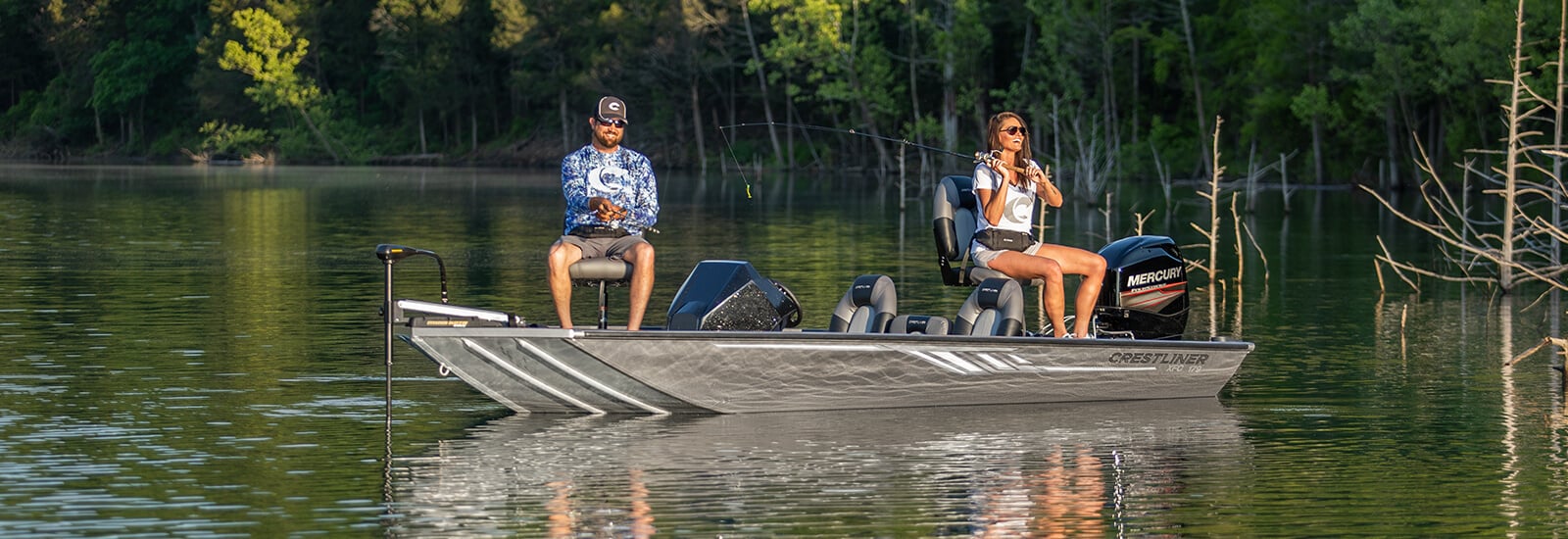
XFC 179
STARTING AT 25015
LAYOUTLENGTH 17' 8"HP RANGE 60-90SEATING 4XFC OverviewA bass- and crappie-catching machine, the XFC 189 is built tough to make all your fishing dreams come true.
-
XFC 189
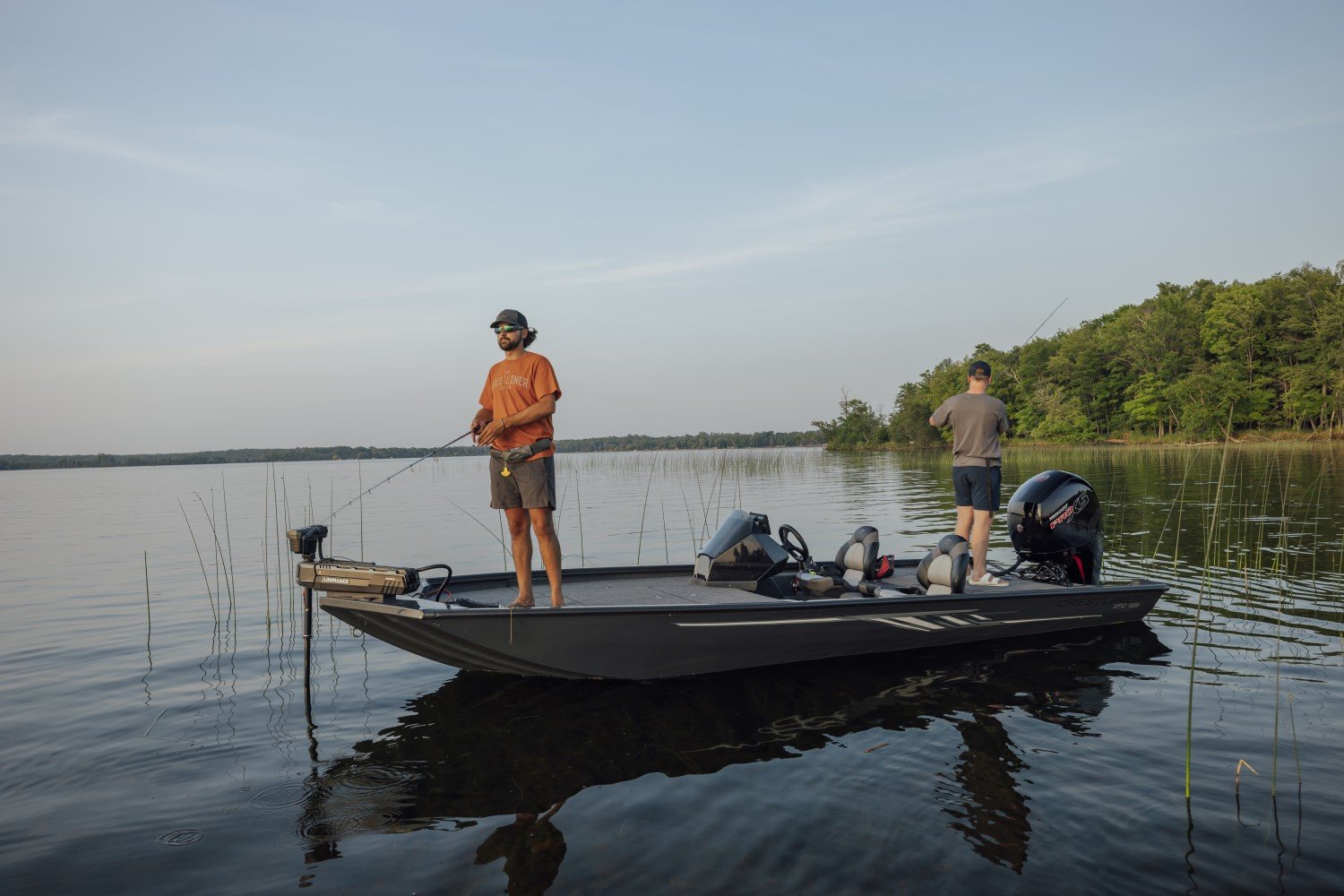
XFC 189
STARTING AT 29140
LAYOUTLENGTH 18' 10"HP RANGE 60-150SEATING 4XFC OverviewThe XFC 189 is a multi-species aluminum fishing boat with the features you need to catch fish all day long.
-
XFC 179
-
MX
-
MX 19
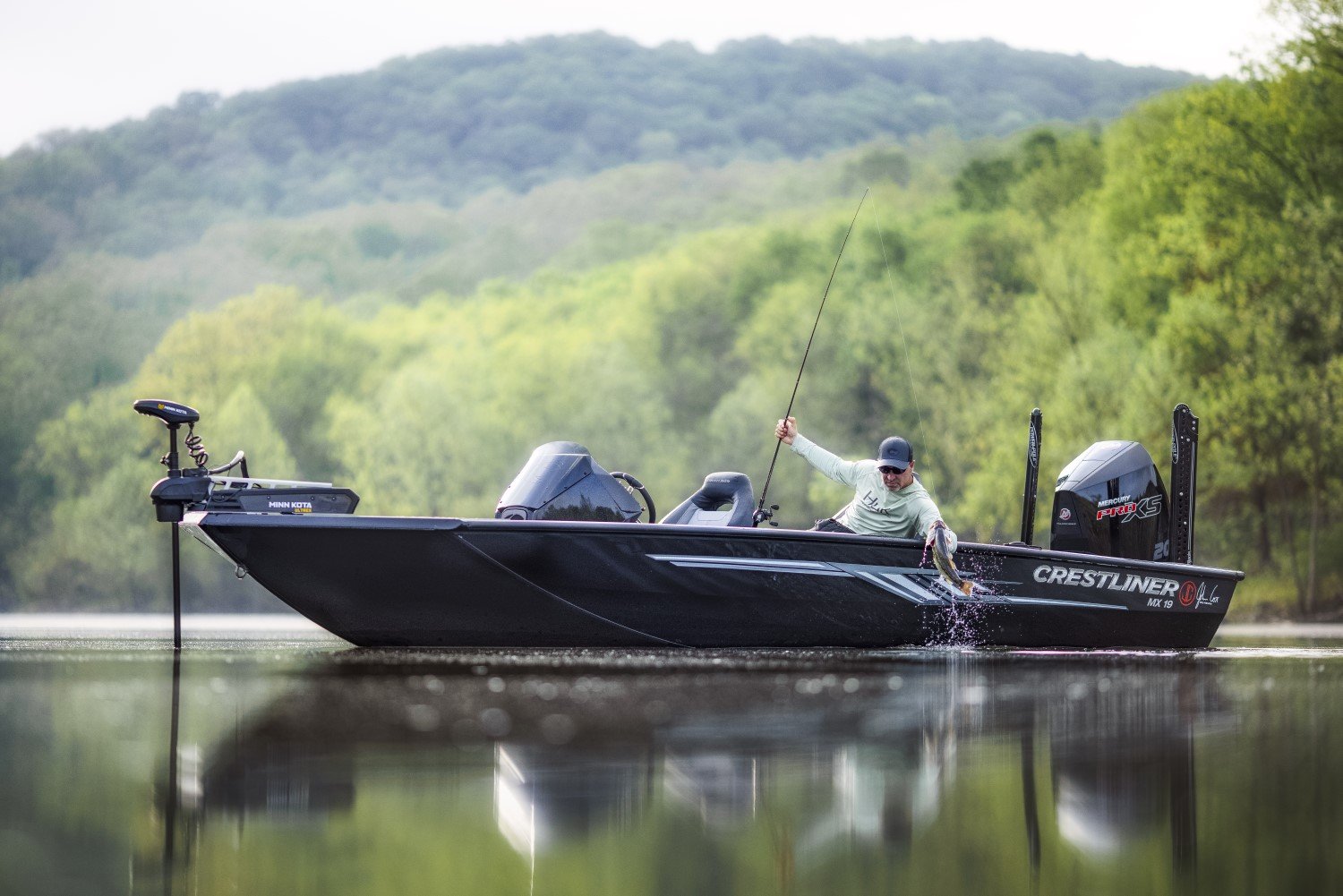
MX 19
STARTING AT 46061
LAYOUTLENGTH 19' 5"HP RANGE 150-200SEATING 4MX OverviewGet all the power and stability and casting space you want from a bass boat. The 19' 5" Mod-V pad hull jumps onto plane rides high and fast and delivers smooth dry performance. Features ample storage for rods and tackle, a massive 45-gallon aerated livewell and tourney-style seating.
-
MX 21
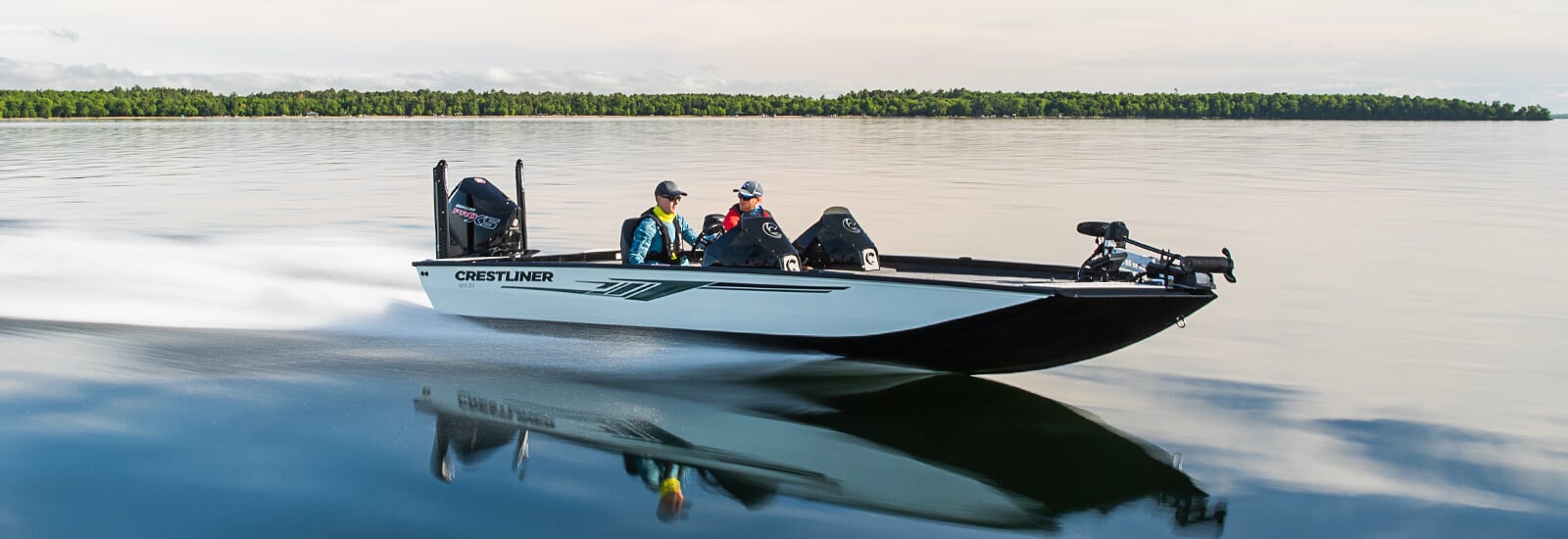
MX 21
STARTING AT 55809
LAYOUTLENGTH 21'5"HP RANGE 200-250SEATING 4MX OverviewWith the MX 21's massive casting deck, you can view the water from everywhere. This 21'.5" Mod-V pad hull jumps onto plane rides high and fast and delivers smooth dry performance. Inside you'll find ample storage for rods and tackle, a massive 45-gallon aerated livewell to hold your catch back to the weigh-in.
-
MX 19
-
Storm
-
Bay
Go confidently beyond the coast
-
Bay
-
1800 Bay
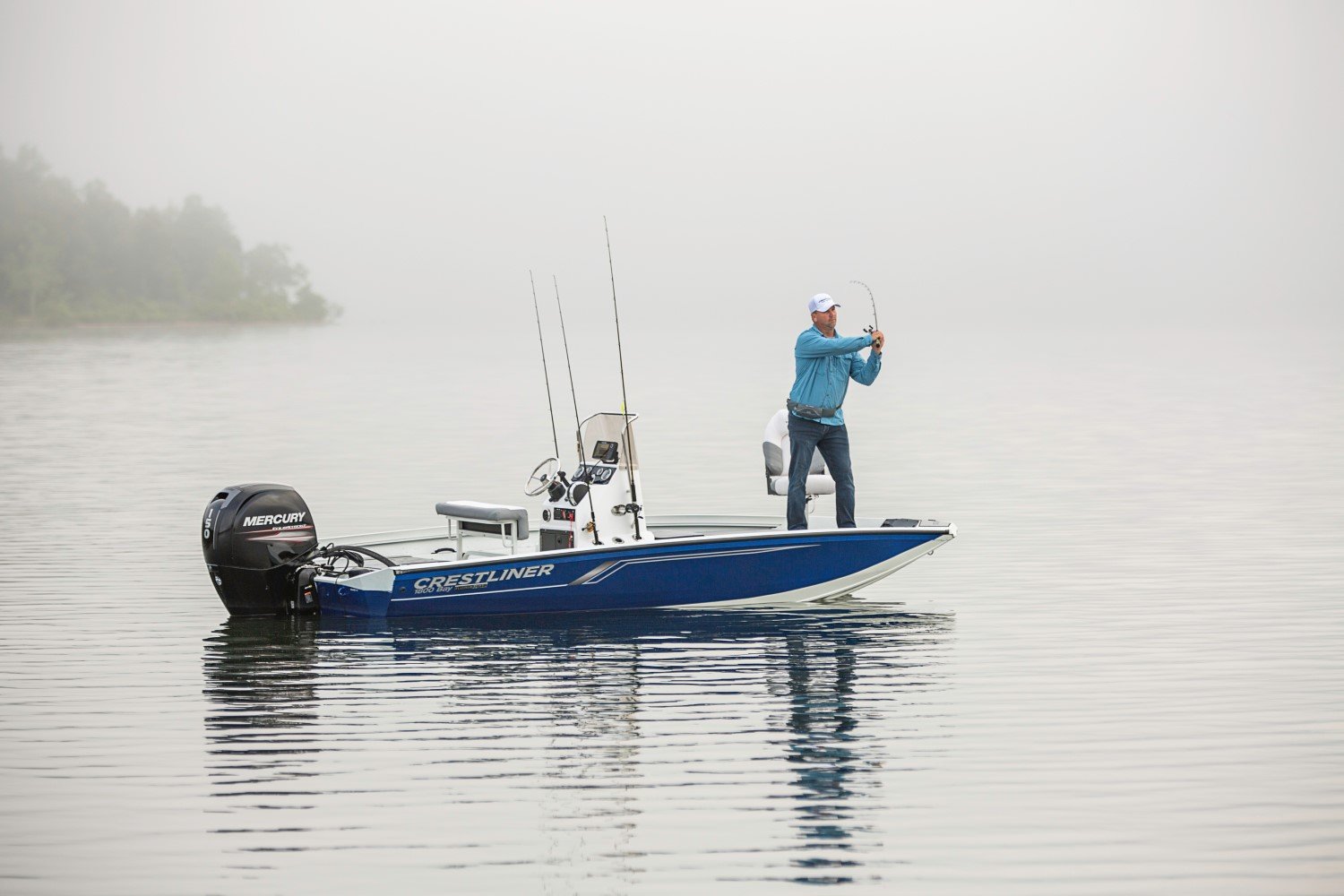
1800 BAY
STARTING AT 35213
LAYOUTLENGTH 18'6"HP RANGE 90-150SEATING 4Bay OverviewThe 1800 Bay combines the best of our bay boat features while maximizing space and storage. When you take it out on the water, you’ll realize that this center console boat has everything you need to own the day, wrapped up in an efficient, agile package.
-
2000 Bay
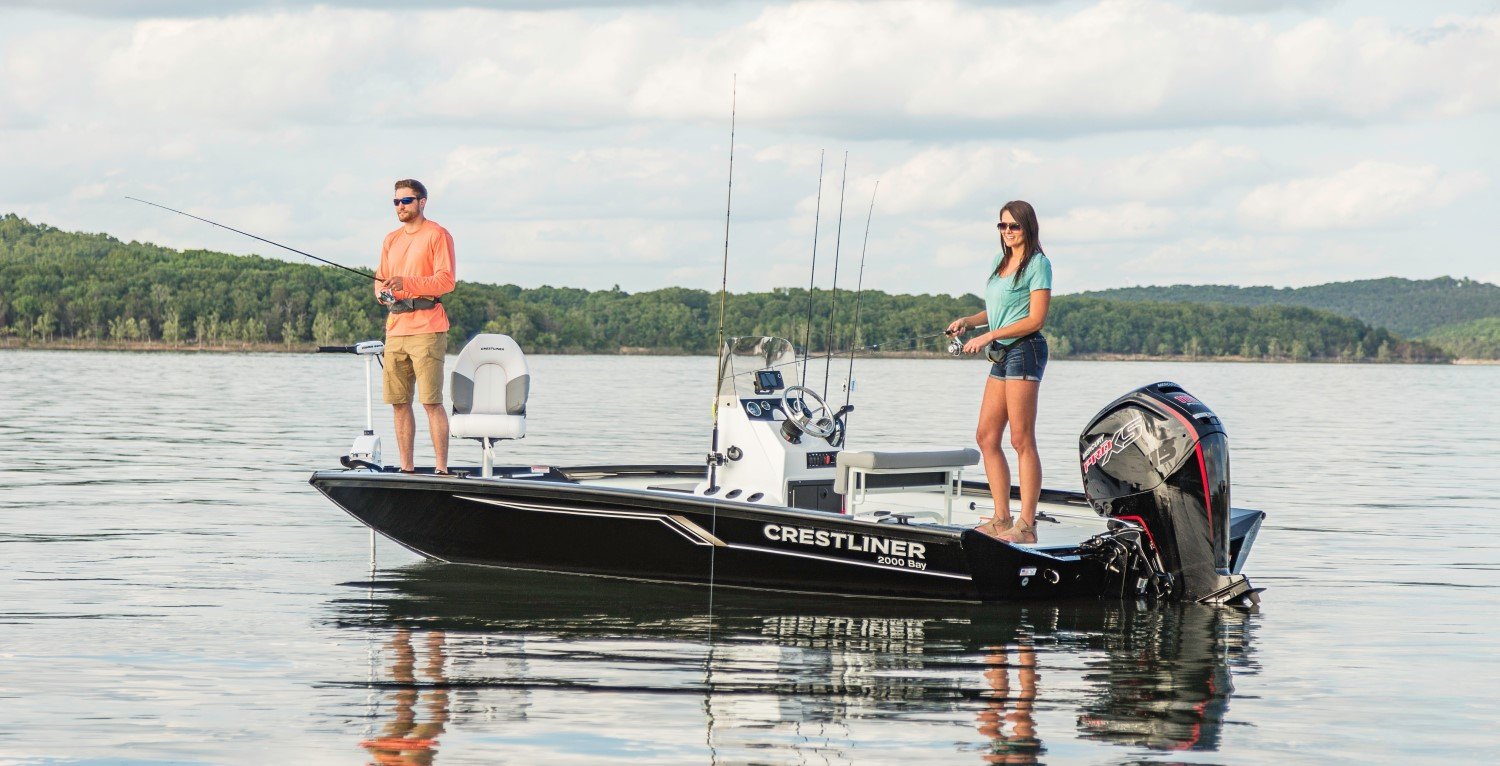
2000 BAY
STARTING AT 38510
LAYOUTLENGTH 20'5"HP RANGE 115-150SEATING 6Bay OverviewNo matter if you’re casting or cruising on intercoastal waters, the Bay series offers ample space, a premium console and plenty of stability so you can get the most out of your day—no matter how you spend it.
-
1800 Bay
-
Bay
-
Center Console
Supreme Visibility for the Shallowest Waters
-
Retriever RCC
-
1860 Retriever RCC
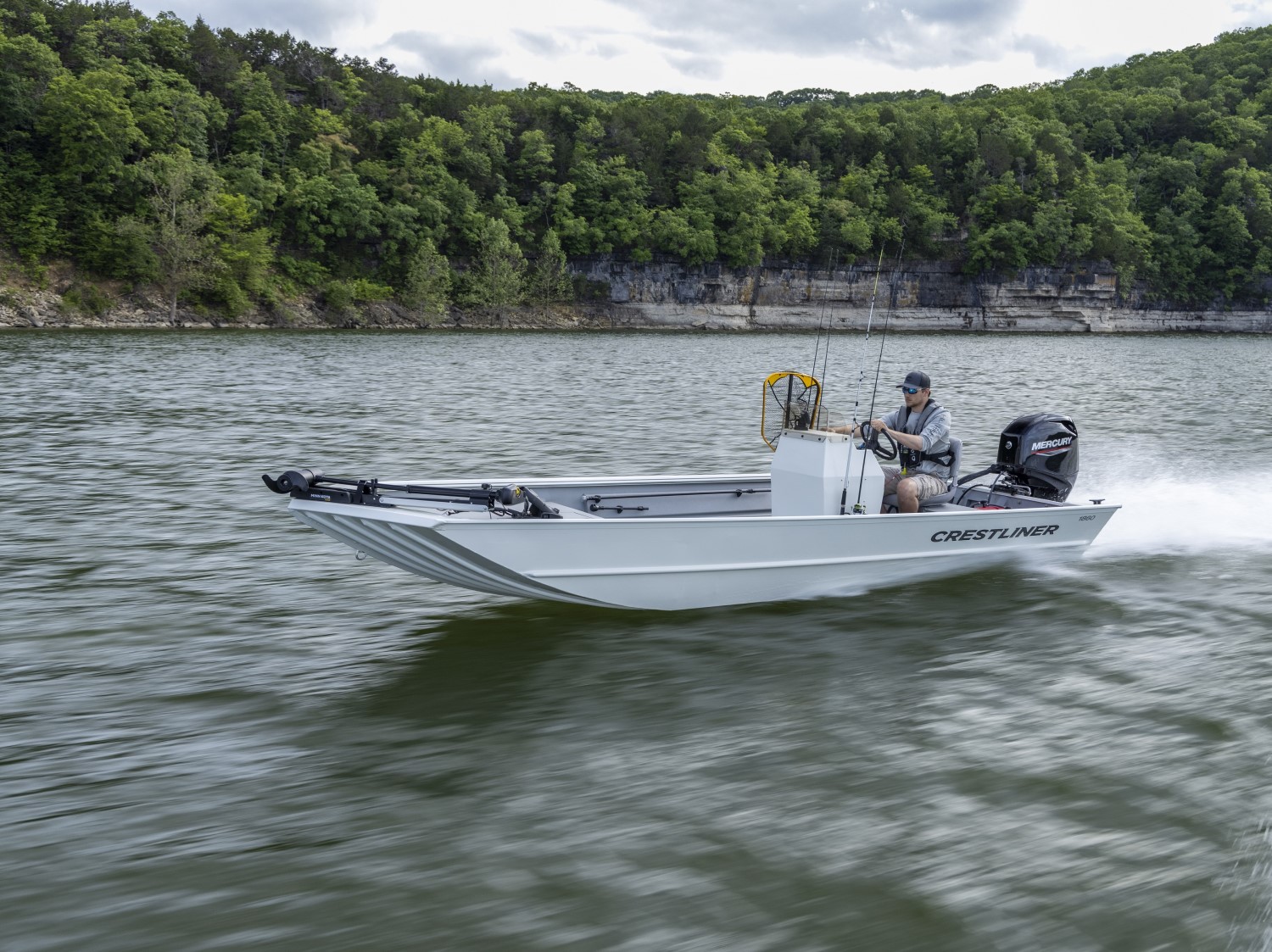
1860 RETRIEVER RCC
STARTING AT 20648
LAYOUT LENGTH 18'HP RANGE 40-60SEATING 6Retriever RCC Overview
LENGTH 18'HP RANGE 40-60SEATING 6Retriever RCC OverviewThe Retriever RCC is purpose-built to keep everything within reach. The rear center console lets you navigate difficult waters with ease while giving you quick access to every piece of your essential hunting fishing and adventure gear.
-
1860 Retriever RCC
-
Retriever CC
-
1860 Retriever CC
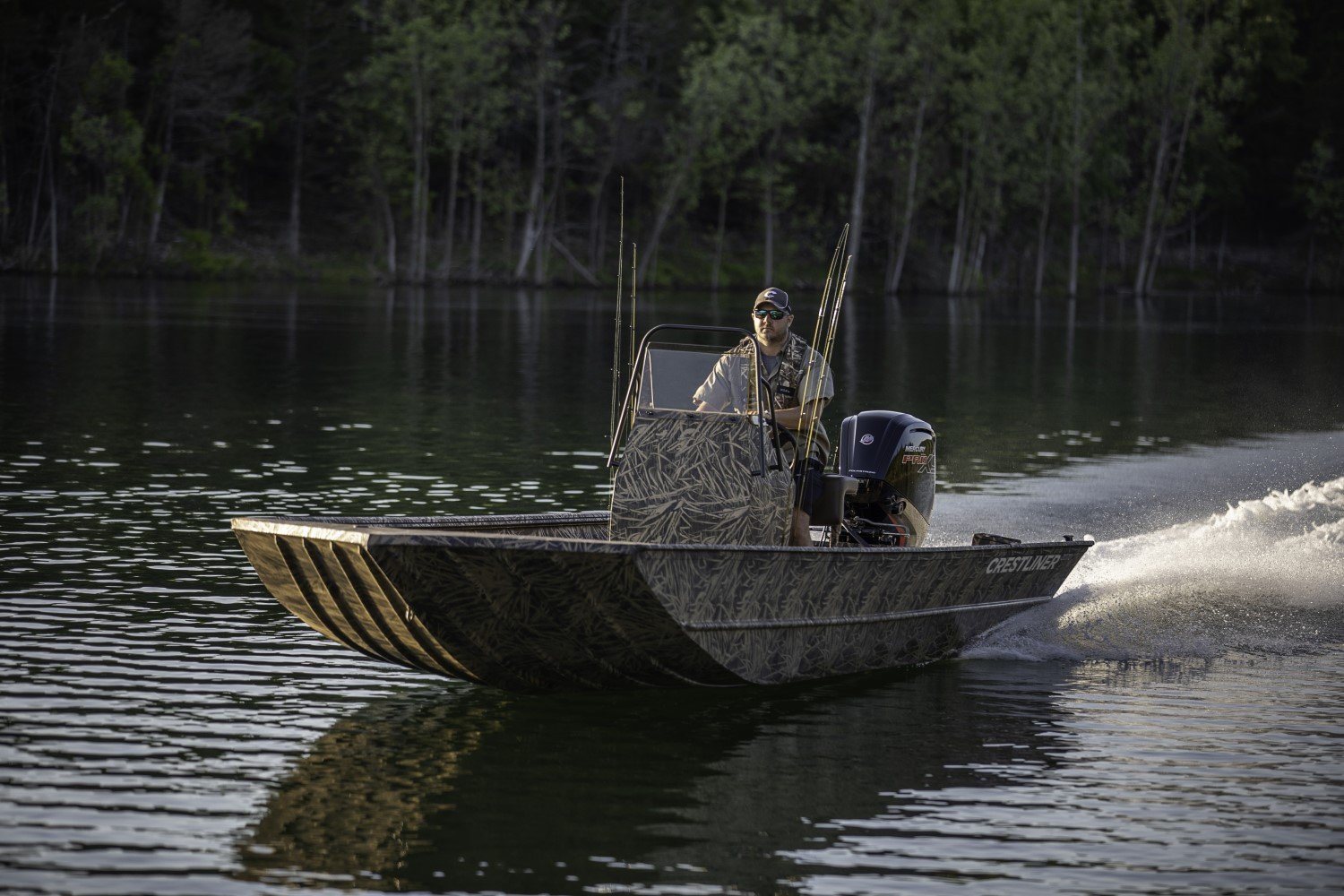
1860 RETRIEVER CC
STARTING AT 24545
LAYOUTLENGTH 18'HP RANGE 25-90SEATING 7Retriever CC OverviewWith this all-welded hunting or fishing boat you'll definitely have the upper hand on both birds and fish. Featuring fold-down seats tons of storage for both rods and gear and plenty of casting room the 1860 Center Console puts you at a distinct advantage.
-
1860 Retriever CC Tunnel
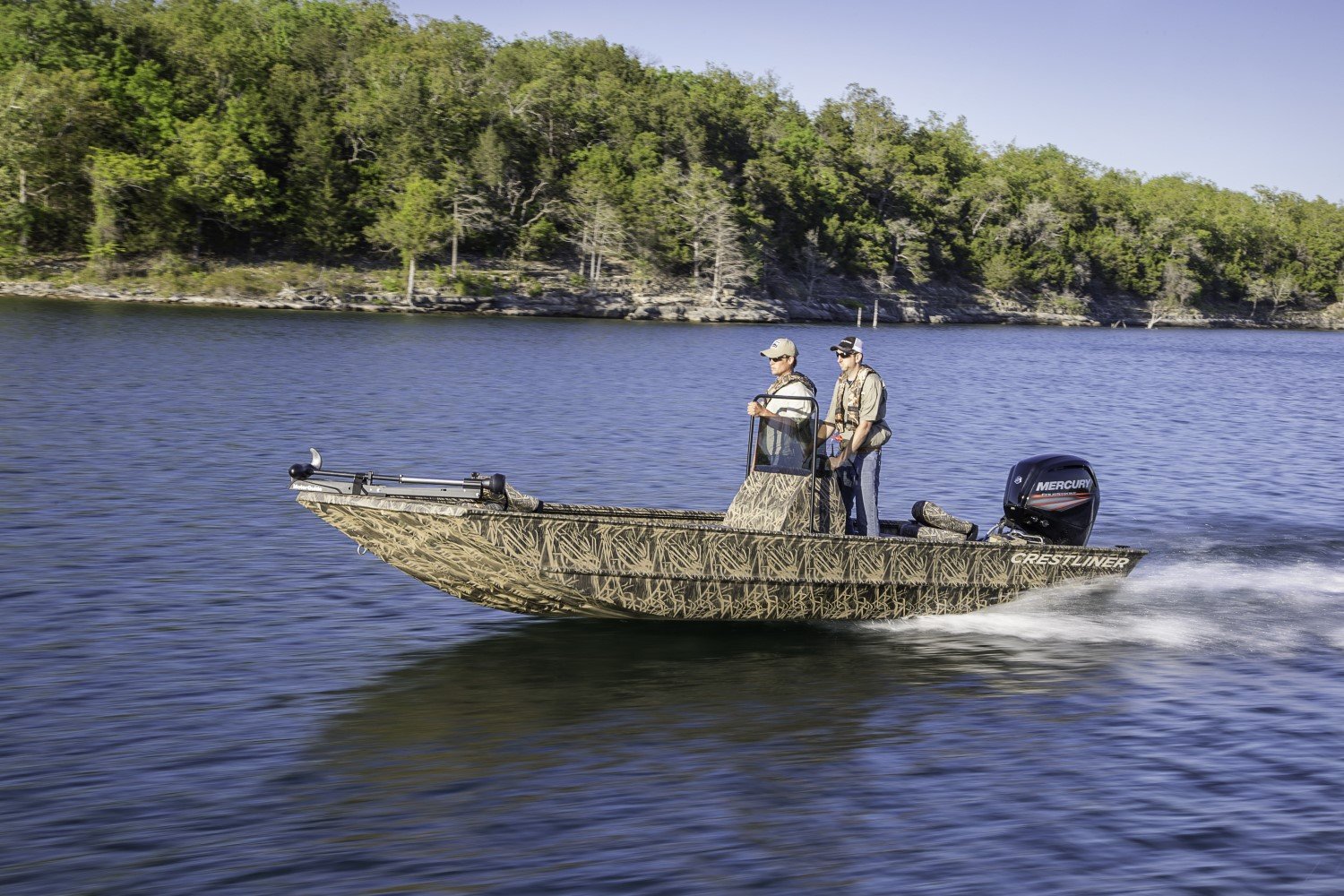
1860 RETRIEVER CC TUNNEL
STARTING AT 27314
LAYOUTLENGTH 18'HP RANGE 25-90SEATING 7Retriever CC OverviewWith this all-welded hunting or fishing boat, you'll definitely have the upper hand on both birds and fish. Featuring tunnel hull for jet motors, tons of storage and plenty of casting room. The 1860 SC Tunnel Hull puts you at a distinct advantage to fish in shallower water.
-
2070 Retriever CC
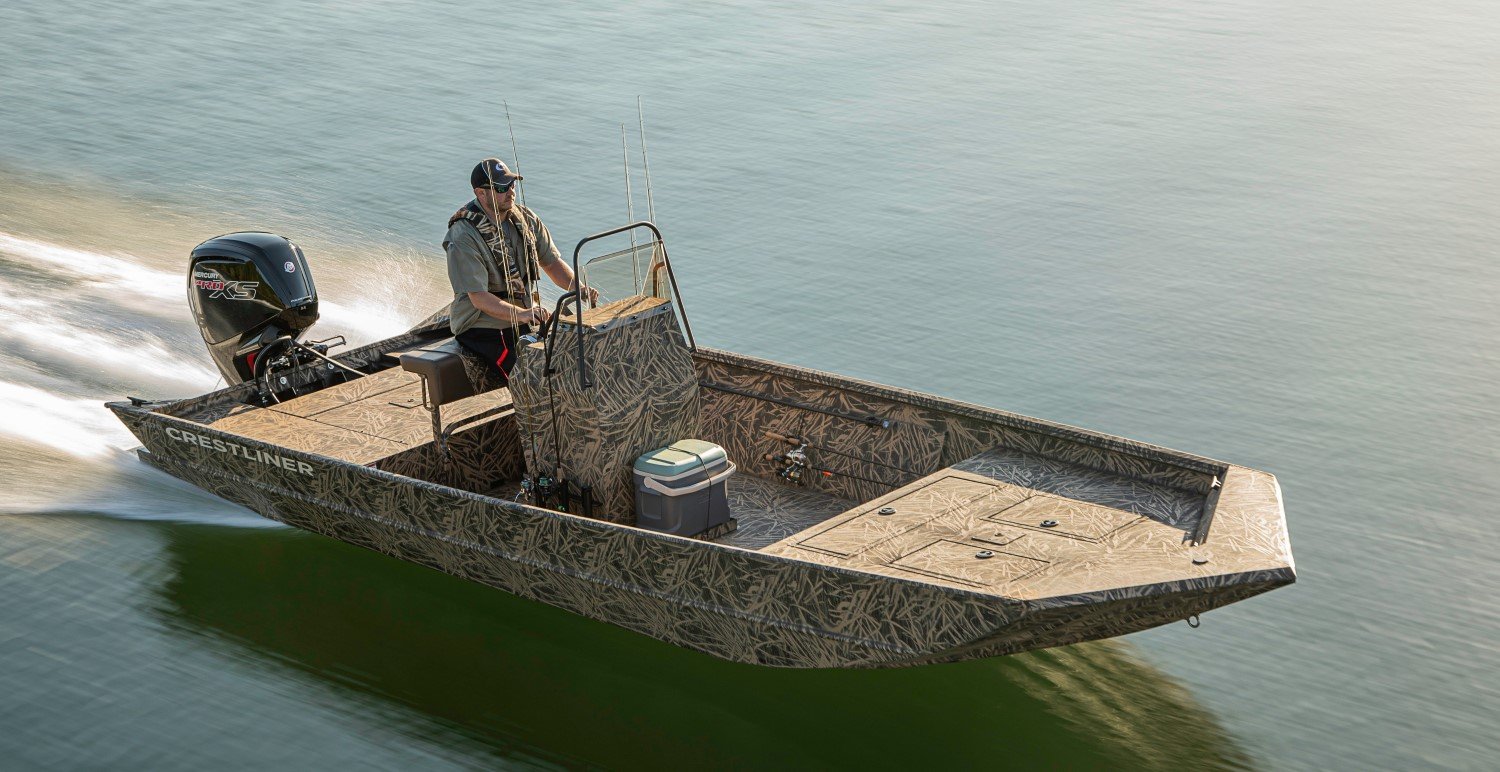
2070 RETRIEVER CC
STARTING AT 31651
LAYOUT LENGTH 20'HP RANGE 25-150SEATING 7Retriever CC Overview
LENGTH 20'HP RANGE 25-150SEATING 7Retriever CC OverviewYou can only mount what you’re able to take back, which is why you’ll appreciate all twenty feet of this Retriever CC. It’s not only perfect for fishing, its ideal for duck hunting vessel as well. A tall console and a ton of storage for both rods and tools will help you get your game.
-
1860 Retriever CC
-
Retriever FCC
-
1660 Retriever FCC
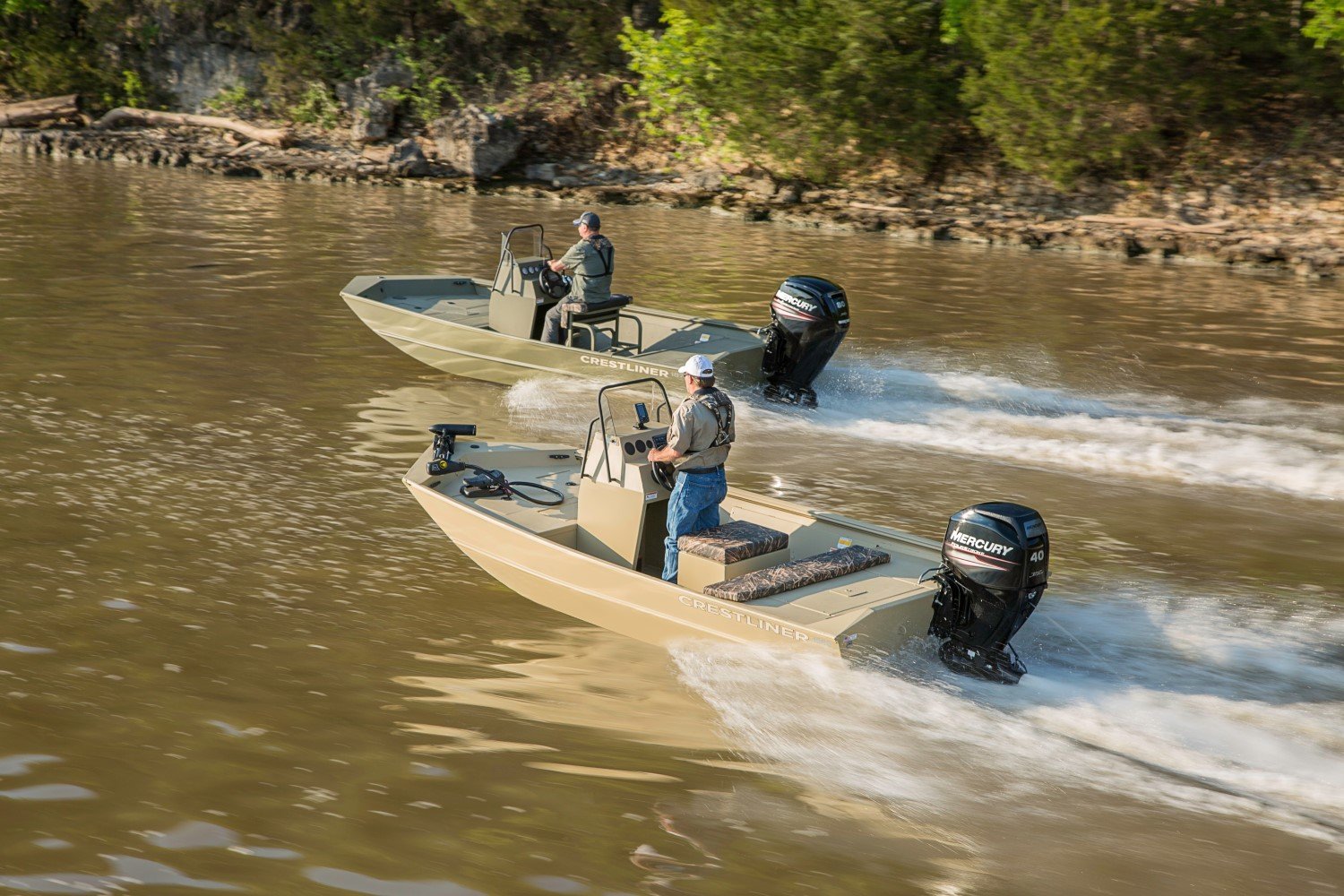
1660 RETRIEVER FCC
STARTING AT 22795
LAYOUT LENGTH 16'HP RANGE 40-65SEATING 4Retriever FCC Overview
LENGTH 16'HP RANGE 40-65SEATING 4Retriever FCC OverviewWhen maneuvering hazard-filled waters, it's essential to have the best view. This 16' forward center console boat gives you a wider view and a smaller draft. The ultra-durable, zero-wood construction, all-welded aluminum hull makes this boat one of the best small tunnel hull jet boats to navigate shallow waters.
-
1870 Retriever FCC
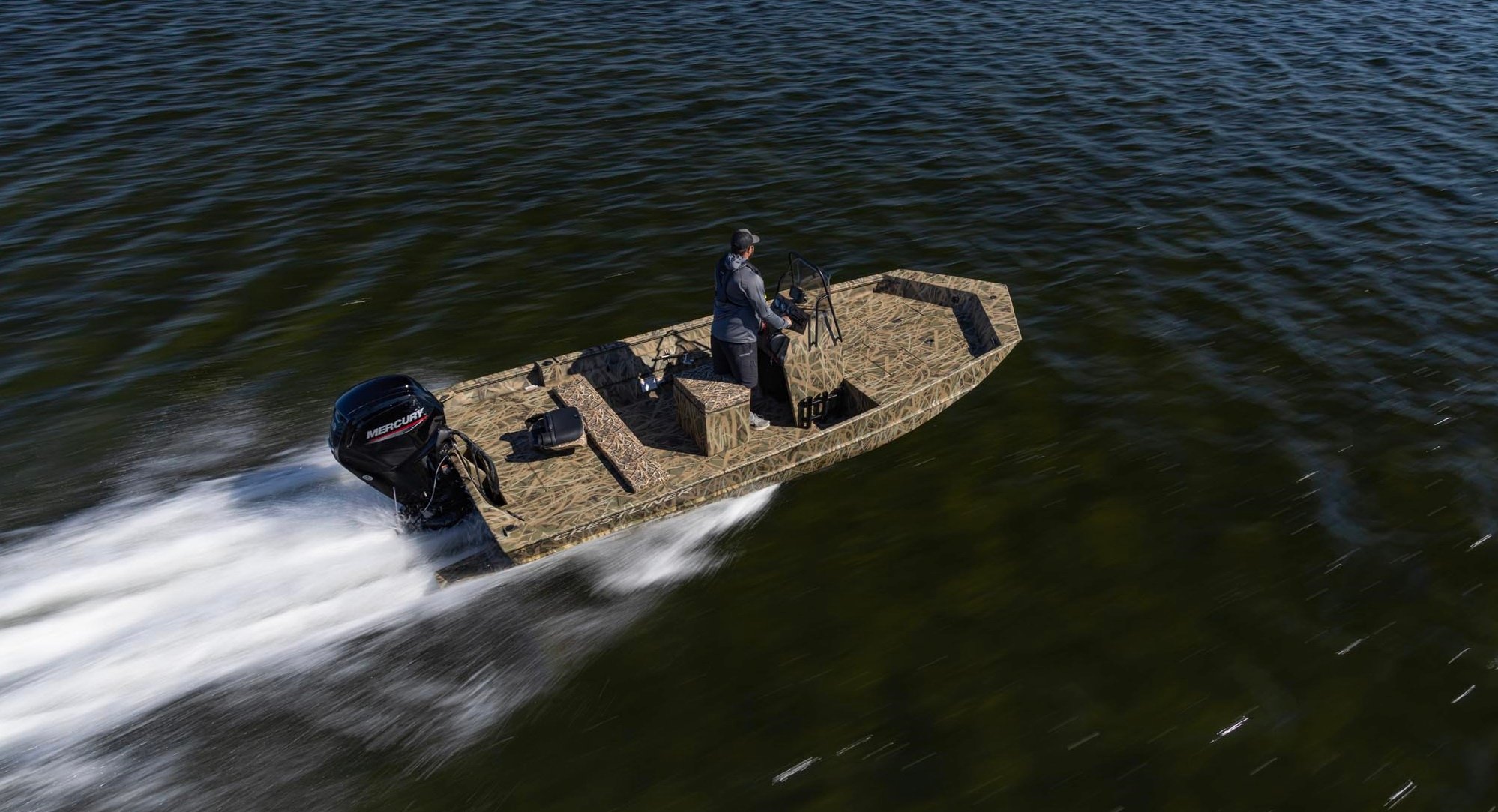
1870 RETRIEVER FCC
STARTING AT 30759
LAYOUT LENGTH 18'HP RANGE 65-80SEATING 7Retriever FCC Overview
LENGTH 18'HP RANGE 65-80SEATING 7Retriever FCC OverviewThis 18-foot forward center console boat is built to give you a maximum line of sight and features a jet engine tunnel hull to maneuver shallow waters. The all-welded construction of the aluminum hull fishing boat is durable enough to withstand even the rockiest shorelines.
-
1660 Retriever FCC
-
Retriever RCC
-
Side Console
Navigate Shallow Water in Comfort
-
Retriever SC
-
1660 Retriever SC
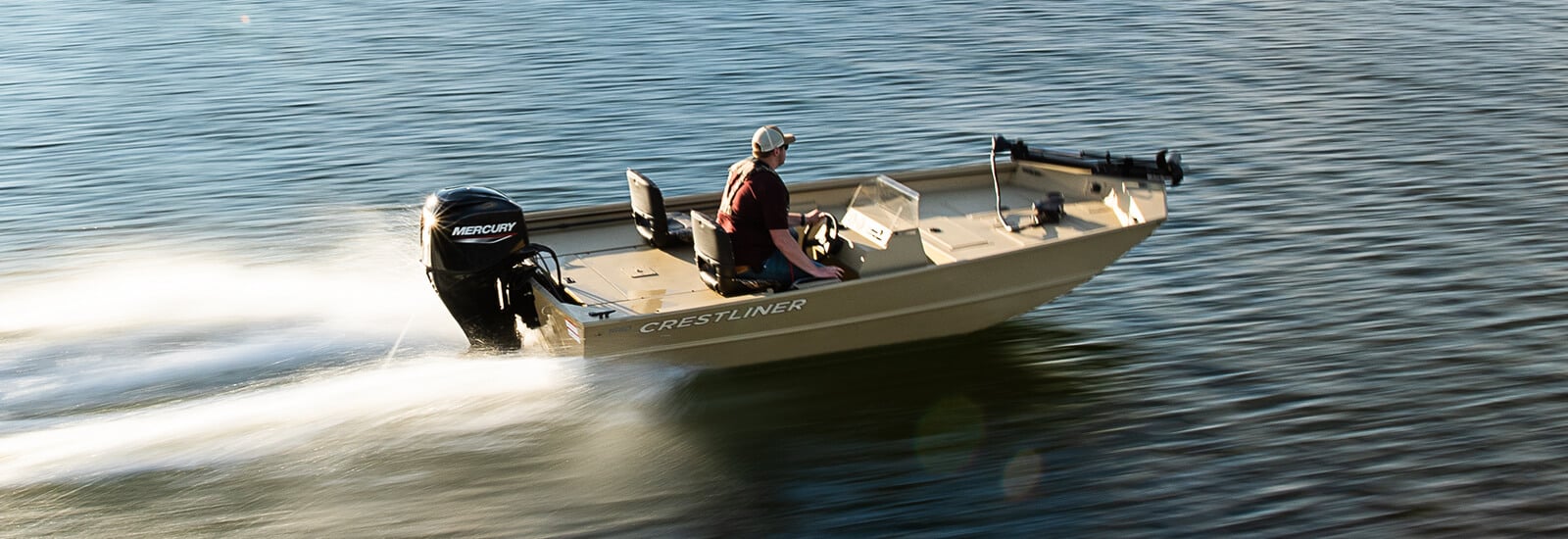
1660 RETRIEVER SC
STARTING AT 21093
LAYOUTLENGTH 16'HP RANGE 20-60SEATING 4Retriever SC OverviewThis aluminum duck boat is built with Crestliner's legendary all-welded aluminum hull so you know it'll be durable enough to handle whatever you throw at it or in it. The 1660 Retriever is balanced for both hunting or fishing storage designed to hold rods and tackle as much as firearms and decoys.
-
1760 Retriever SC
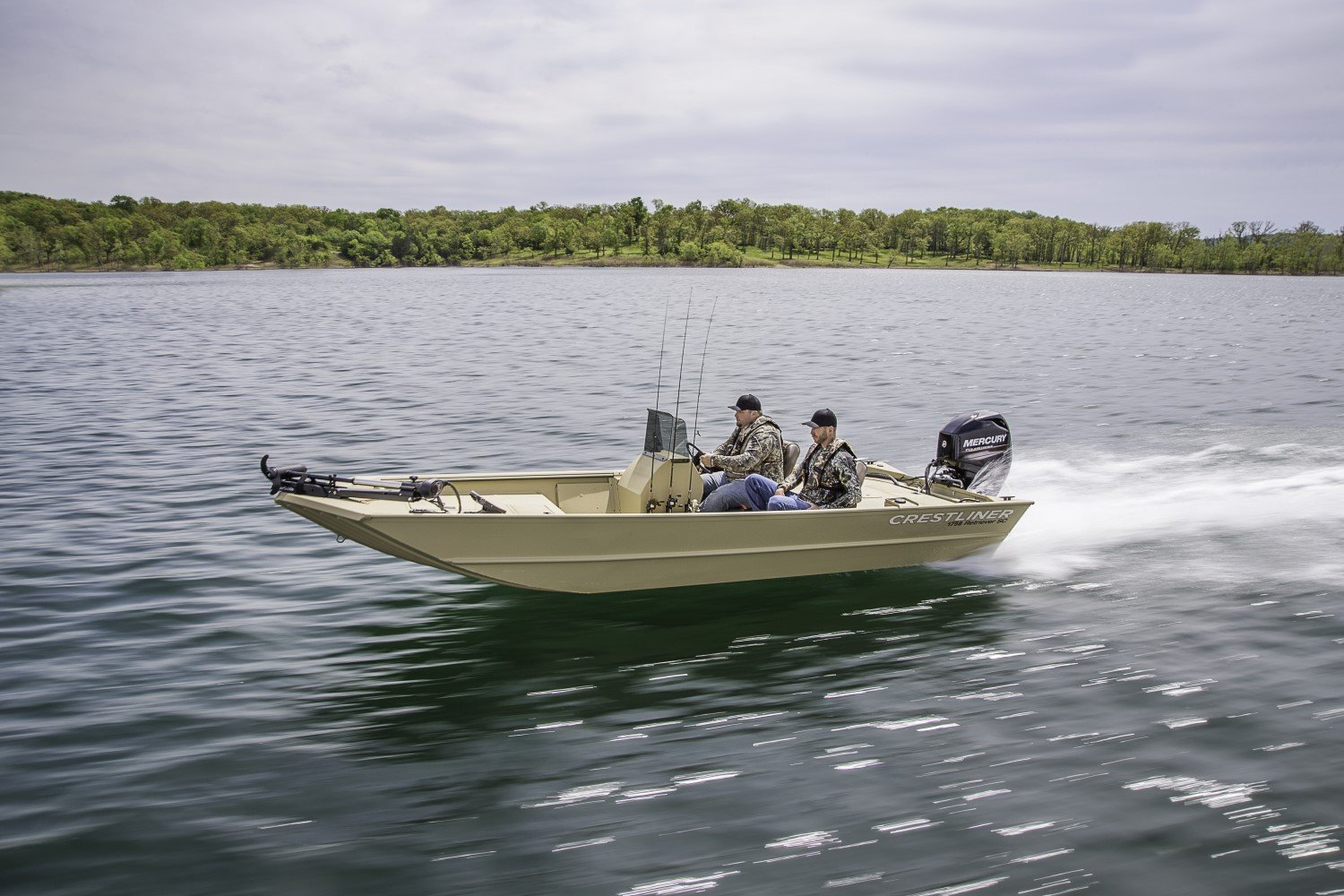
1760 RETRIEVER SC
STARTING AT 22454
LAYOUTLENGTH 17'HP RANGE 25-75SEATING 5Retriever SC OverviewWhen you’re looking for a boat that you can either hunt birds or stalk fish from, make sure you look long and hard at the 1760 Retriever SC. This durable mod-v is right at home in the thick of it and is built with all the features that’ll satisfy any outdoorsman.
-
1860 Retriever SC
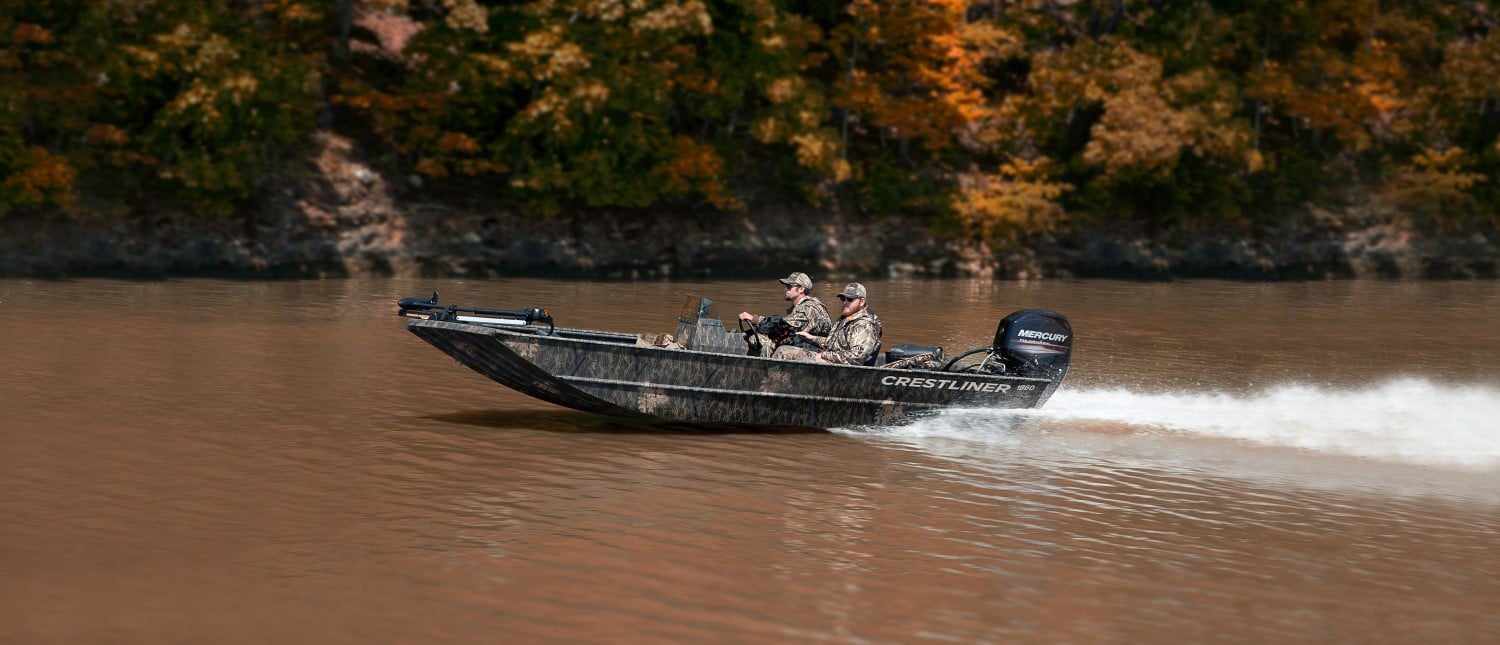
1860 RETRIEVER SC
STARTING AT 24058
LAYOUTLENGTH 18'HP RANGE 25-90SEATING 7Retriever SC OverviewWith this all-welded hunting or fishing boat, you’ll definitely have the upper hand on both birds and fish. Featuring fold-down seats, tons of storage for both rods and gear, and plenty of casting room, it will put you at a distinct advantage.
-
2070 Retriever SC
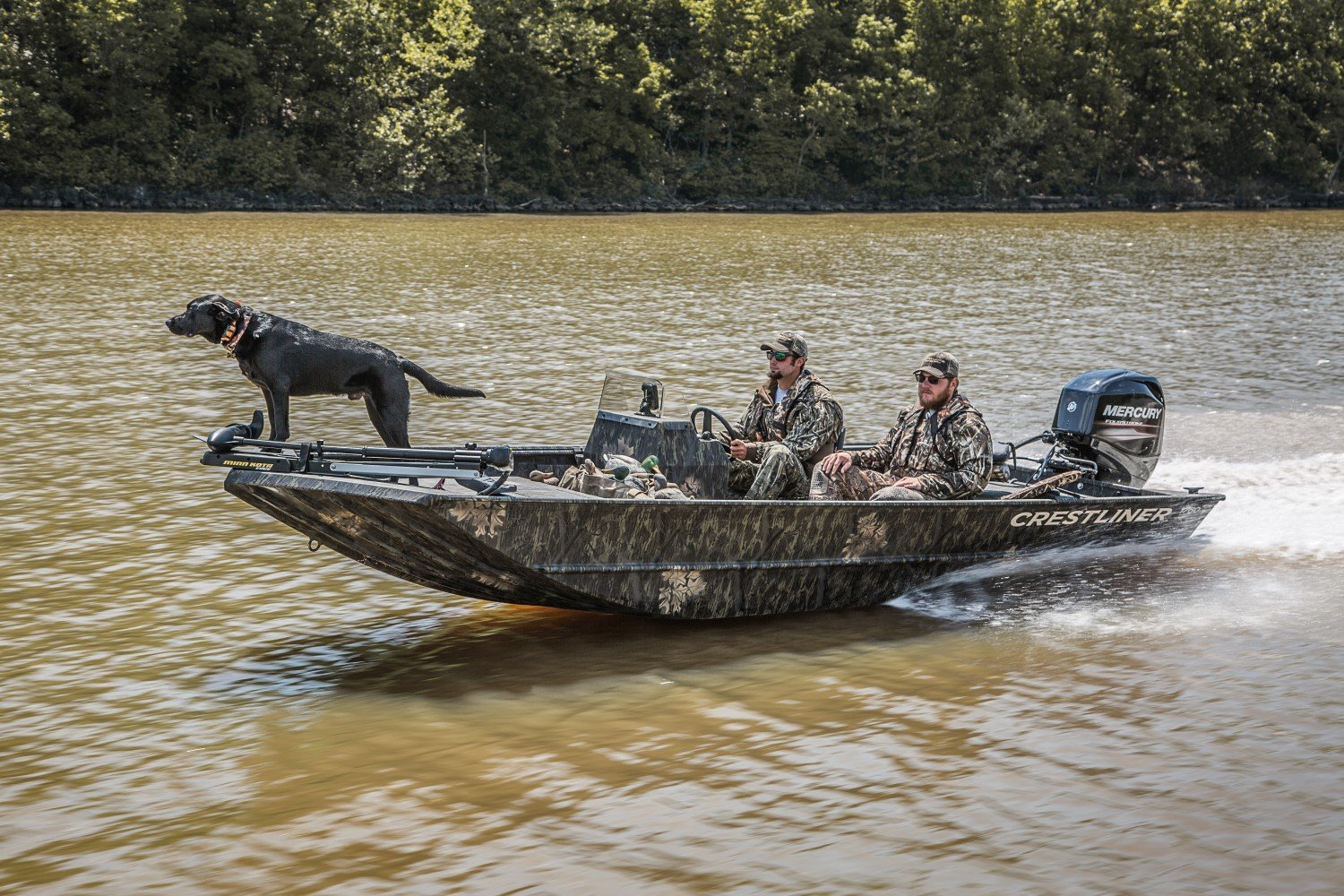
2070 RETRIEVER SC
STARTING AT 30958
LAYOUTLENGTH 20'HP RANGE 25-150SEATING 7Retriever SC OverviewYou can only mount what you’re able to take back, which is why you’ll appreciate all twenty feet of the 2070 Retriever SC. It’s not only perfect for fishing, it is an ideal hunting vessel as well. Features fold-down seats and a ton of storage to get your game--be it in the air or in the water.
-
1660 Retriever SC
-
Retriever SCHD
-
2070 Retriever SCHD
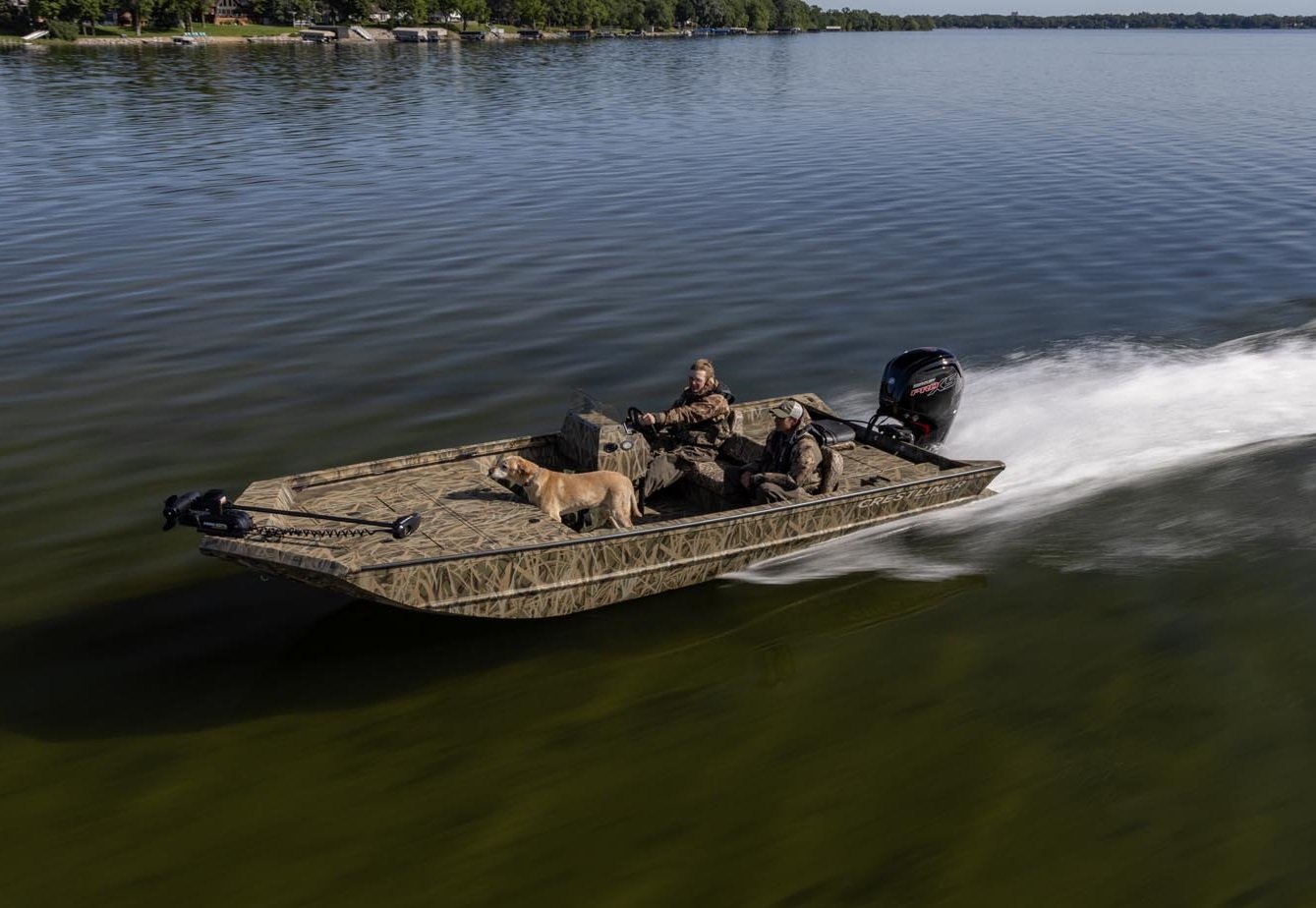
2070 RETRIEVER SCHD
STARTING AT 31688
LAYOUTLENGTH 20'HP RANGE 75-150SEATING 7Retriever SCHD OverviewThe 2070 Retriever SC Heavy Duty (SCHD) measures in at 20'. This heavy-duty boat has a .125 aluminum gauge bottom, a broad beam design and an all-welded aluminum hull that can tackle any pursuit be it in the air or in the water. Also features fold-down seats and a ton of storage to get your game.
-
2070 Retriever SCHD
-
Retriever SC
-
Tiller
Ultimate Shallow-Water Control
-
CR Jon
-
1032 CR Jon
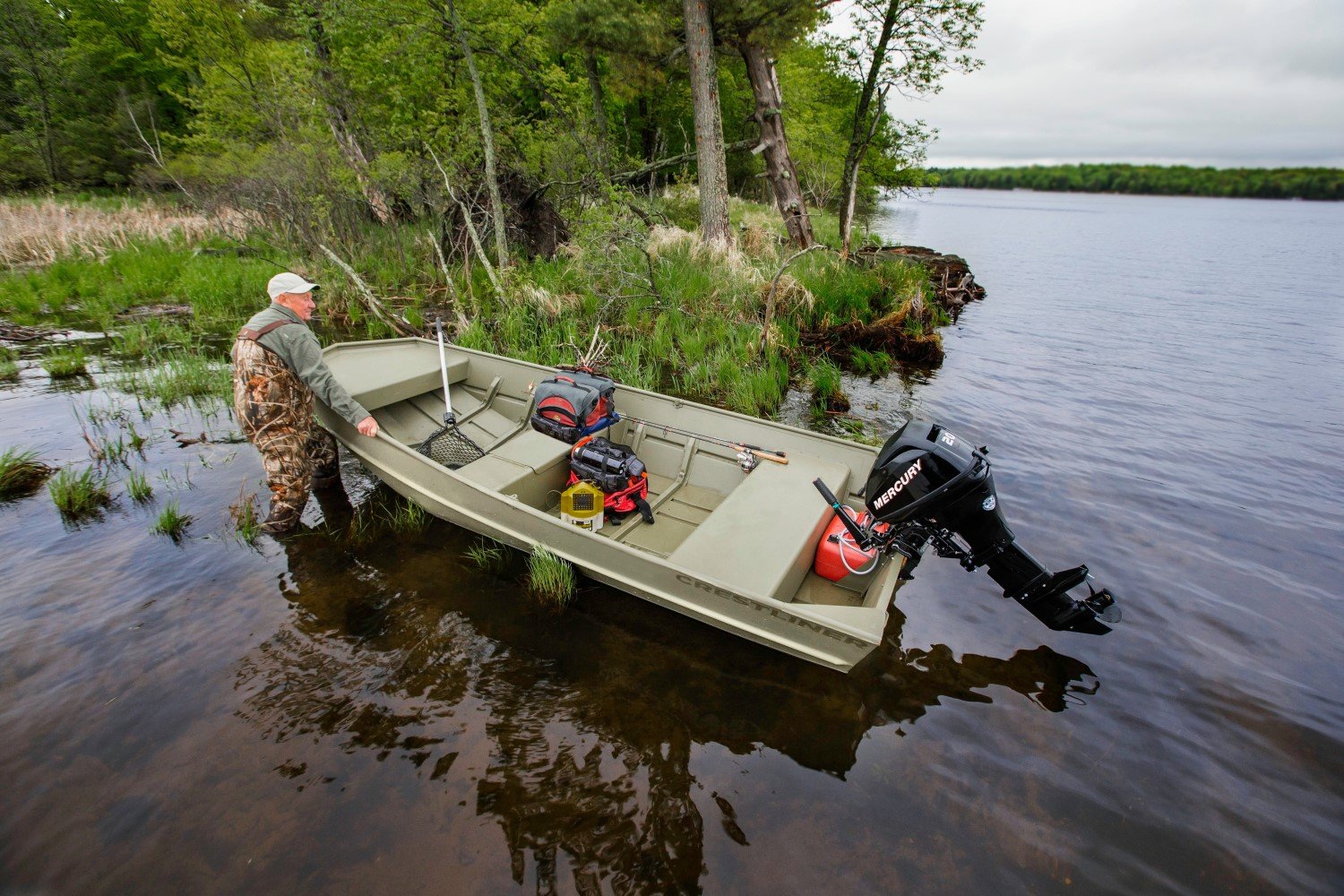
1032 CR JON
STARTING AT 1128
LAYOUTLENGTH 10'HP RANGE 0-3SEATING 2CR Jon OverviewWide and durable, this small fishing boat simply gets the job done.
-
1040 CR Jon

1040 CR JON
STARTING AT 1189
LAYOUTLENGTH 10'HP RANGE 0-5SEATING 2CR Jon OverviewWide and durable, this small fishing boat simply gets the job done.
-
1240 CR Jon

1240 CR JON
STARTING AT 1537
LAYOUTLENGTH 11'9"HP RANGE 2-9.9SEATING 2CR Jon OverviewWhatever that job is, that’s up to you. Load up this aluminum flat bottom boat with stuff to move or spend a day on the water with your 12 ft CR Jon. Now that’s a job well done.
-
1436L CR Jon

1436L CR JON
STARTING AT 1932
LAYOUTLENGTH 14'HP RANGE 9.9-15SEATING 3CR Jon OverviewYou may work hard a lot but you deserve some quality time on the water with this no-frills aluminum jon boat. Durable roomy and with formed-in spray rails for a drier ride the 14 ft CR Jon is a great way to spend some time on the water.
-
1448M CR Jon

1448M CR JON
STARTING AT 3602
LAYOUTLENGTH 14'HP RANGE 9.9-25SEATING 4CR Jon OverviewYou may work hard a lot but you deserve some quality time on the water with this no-frills aluminum jon boat. Durable, roomy and with formed-in spray rails for a drier ride. The 14 ft CR Jon is a great way to spend some time on the water.
-
1448 CR Jon

1448 CR JON
STARTING AT 3481
LAYOUTLENGTH 14'HP RANGE 9.9-25SEATING 4CR Jon OverviewYou may work hard a lot but you deserve some quality time on the water with this no-frills aluminum 14' jon boat. Durable roomy and with formed-in spray rails for a drier ride.
-
1648M CR Jon

1648M CR JON
STARTING AT 4067
LAYOUTLENGTH 15'10"HP RANGE 9.9-35SEATING 4CR Jon OverviewYour passion for fishing knows no bounds. Good thing this aluminum jon boat is here. With just enough fishing features to keep you going like formed-in spray rails to keep you dry, and its durable enough to handle whatever the you--or the water--may throw at it.
-
1648 CR Jon

1648 CR JON
STARTING AT 3839
LAYOUTLENGTH 15'10"HP RANGE 9.9-35SEATING 4CR Jon OverviewYour passion for fishing knows no bounds. Good thing this aluminum jon boat is here. With just enough fishing features to keep you going like formed-in spray rails to keep you dry, the 16 ft CR Jon is also durable enough to handle whatever the you--or the water--may throw at it.
-
1852MT CR Jon

1852MT CR JON
STARTING AT 5971
LAYOUTLENGTH 18'HP RANGE 20-40SEATING 6CR Jon OverviewThis 18 ft CR Jon is built with an aluminum hull for maximum sturdiness and features formed-in spray rails for a drier ride. This boat serves as a durable transport from one side of the lake to the other while doubling as a jon boat.
-
1032 CR Jon
-
Outreach
-
1469 Outreach

1469 OUTREACH
STARTING AT 4693
LAYOUTLENGTH 14' 6"HP RANGE 0-25SEATING 4Outreach OverviewThe 1469 Outreach is built for one reason: to provide you with a durable, uncomplicated way to get on the water to catch fish. This small aluminum utility boat is lightweight and easy to move making it great for camping or as a dependable resort boat.
-
1672 Outreach
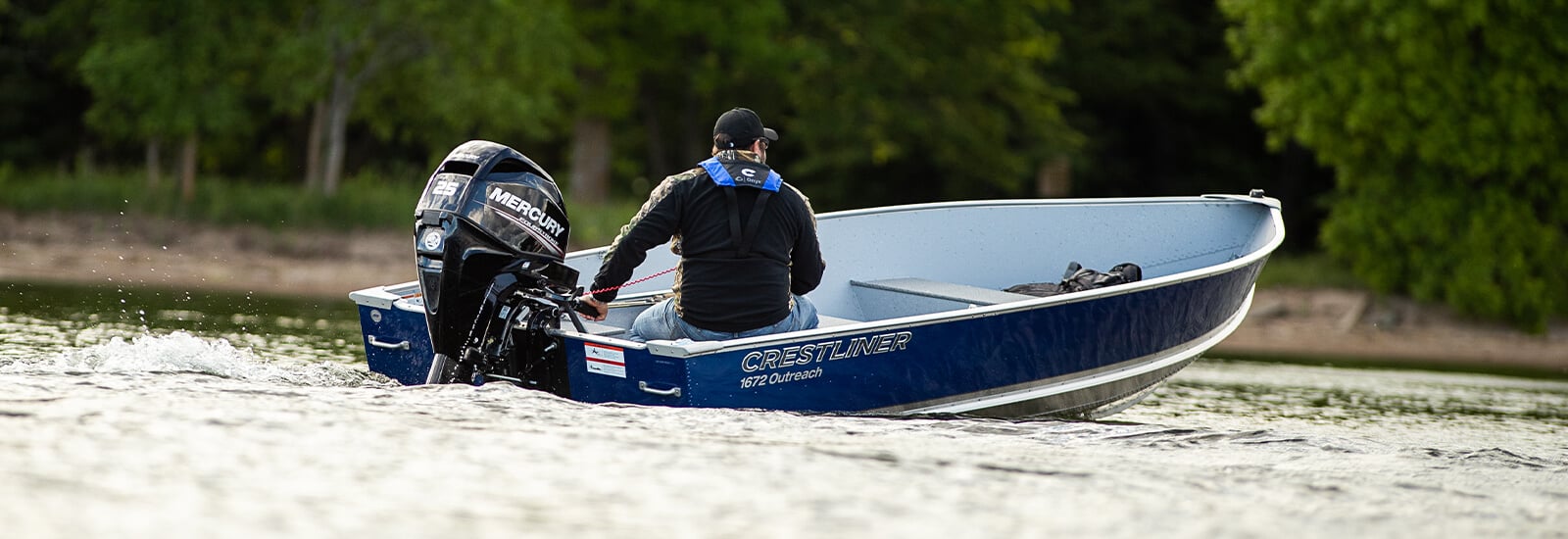
1672 OUTREACH
STARTING AT 5779
LAYOUTLENGTH 16' 2"HP RANGE 0-25SEATING 5Outreach OverviewThe 1672 Outreach is an ideal combination of durability and affordability, especially when looking for dependable aluminum utility boats. Its rugged simplicity is enhanced with purposeful features like stern split bench seating for easy access to the stern, marine-grade vinyl wrapped bench seats.
-
1469 Outreach
-
Retriever Jon
-
1546 Retriever Jon

1546 RETRIEVER JON
STARTING AT 12840
LAYOUTLENGTH 15' 1"HP RANGE 20-25SEATING 4Retriever Jon OverviewThe 1546 Retriever Jon was built with anglers and hunters in mind. With space for four people, this no-frills boat is perfect for those who just want to get outside and hunt and fish alone or with some friends.
-
1660 Retriever Jon
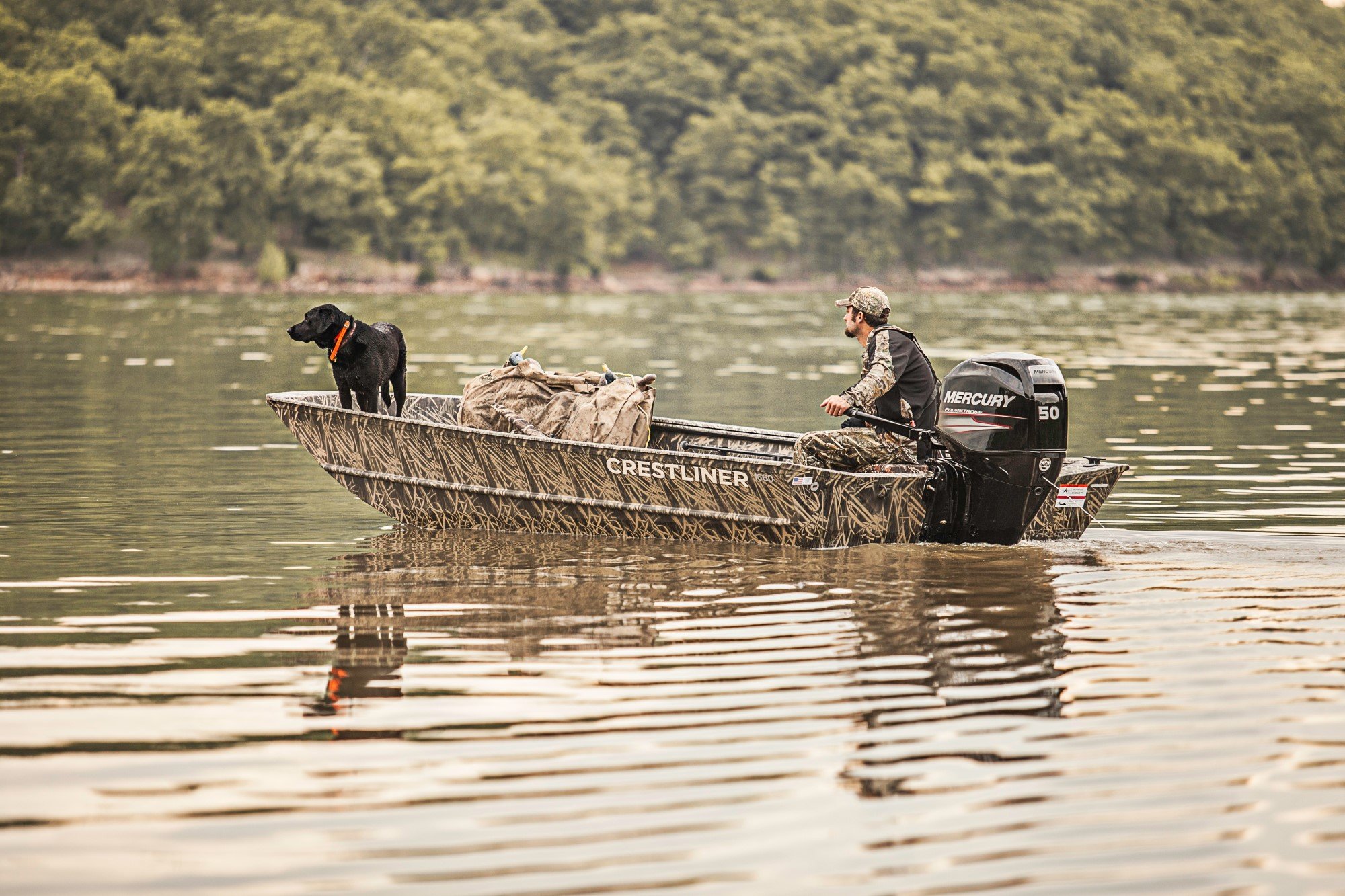
1660 RETRIEVER JON
STARTING AT 15390
LAYOUTLENGTH 16'HP RANGE 20-40SEATING 4Retriever Jon OverviewThe 1660 Retriever Jon is a no-nonsense flat-bottomed boat that's ready to hunt or fish at a moment's notice. This 16-foot jon boat has a strong, durable hull made of all-welded aluminum. You can reach any corner of the water in search of your next catch.
-
1760 Retriever Jon

1760 RETRIEVER JON
STARTING AT 18266
LAYOUTLENGTH 17'HP RANGE 20-50SEATING 5Retriever Jon OverviewWhen you’re hunting or fishing, the moment you step into the 1760 Retriever Jon boat, the first thing you’ll notice is its rock-solid stability. It’s a low-maintenance option that can fit plenty of gear so you can enjoy the day hunting or fishing confidently.
-
1860 Retriever Jon
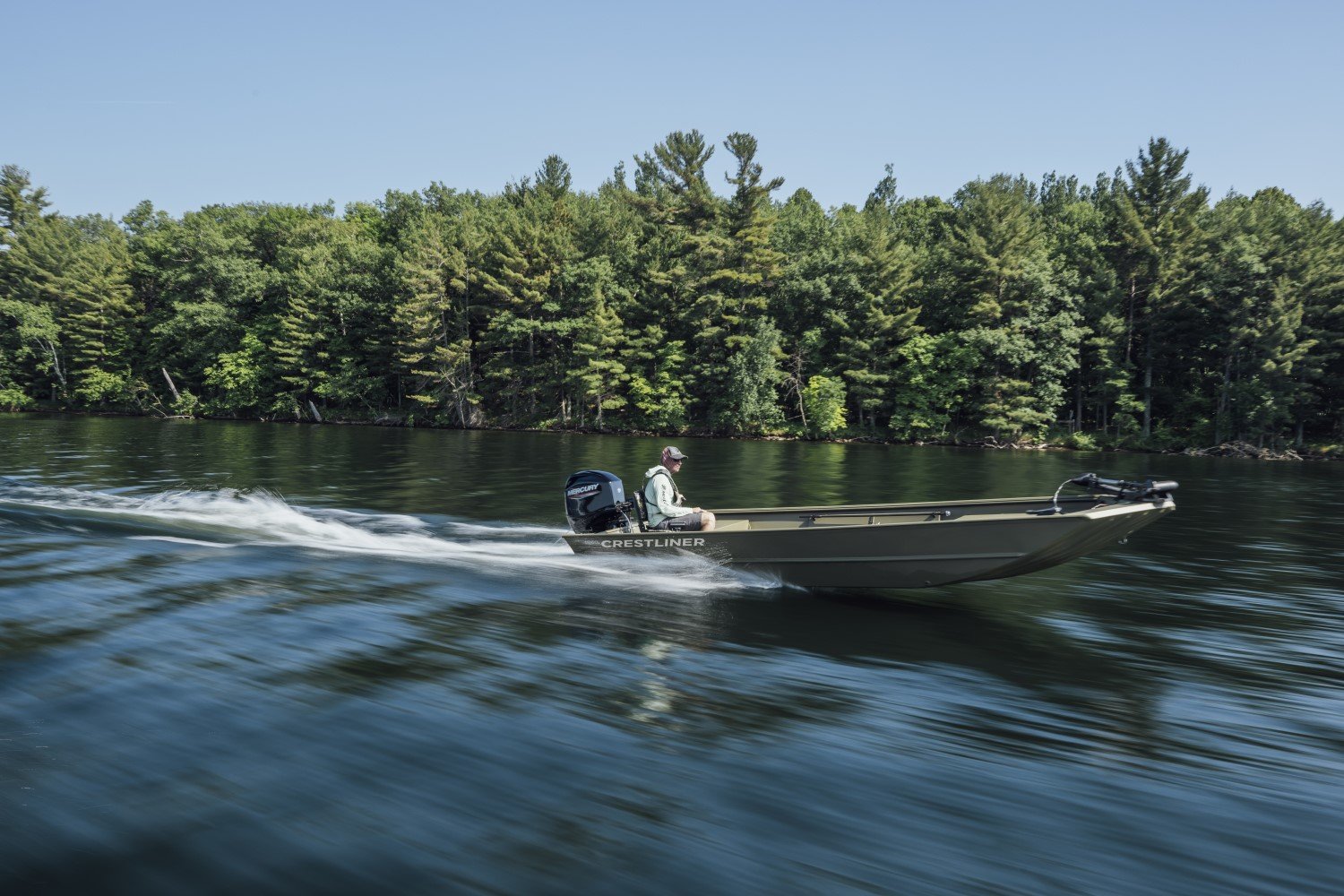
1860 RETRIEVER JON
STARTING AT 19113
LAYOUTLENGTH 18'HP RANGE 20-60SEATING 6Retriever Jon OverviewThe 1860 Retriever Jon is a strong and simple way to get out on the water and enjoy the day. And with the option to add camouflage paint, whether you’re hunting or fishing, you’ll always have the element of surprise.
-
2070 Retriever Jon

2070 RETRIEVER JON
STARTING AT 21142
LAYOUTLENGTH 20'HP RANGE 20-75SEATING 7Retriever Jon OverviewThe 2070 Retriever Jon is a 20-foot jon boat built for those who appreciate the simplicity of the outdoors. This low-maintenance option was made for the avid hunter or fisherman who doesn’t need the frills to limit out.
-
1546 Retriever Jon
-
Retriever Jon Deluxe
-
1660 Retriever Jon Deluxe
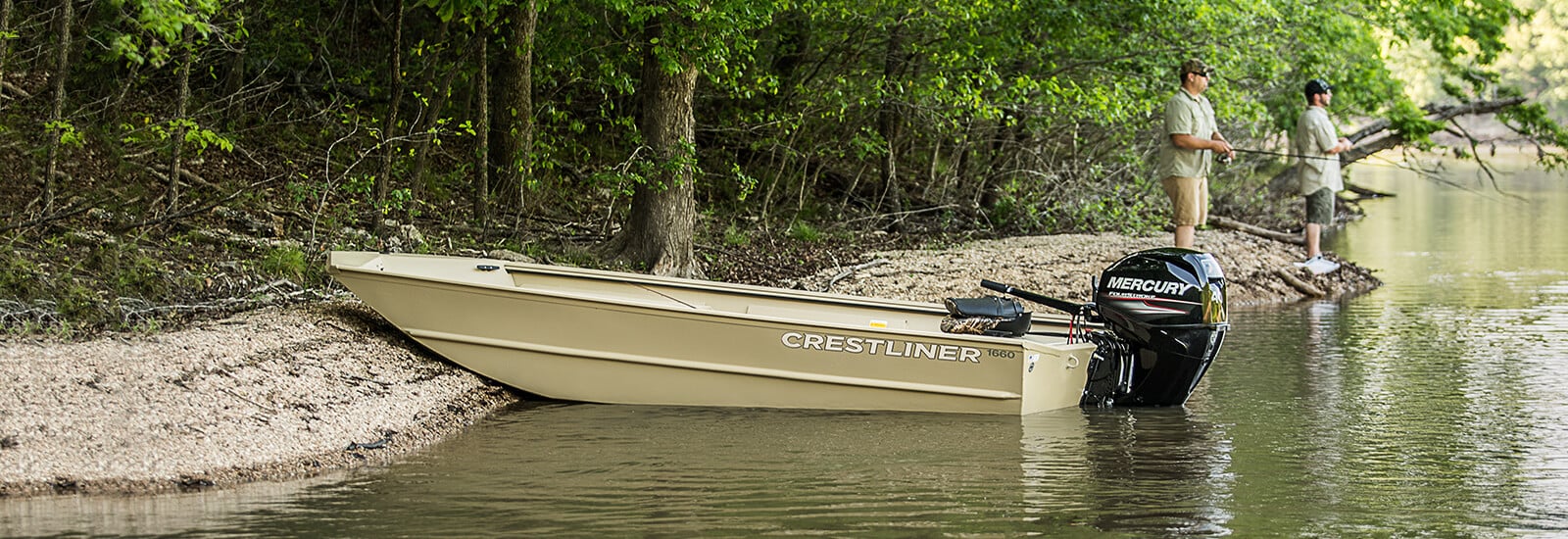
1660 RETRIEVER JON DELUXE
STARTING AT 18988
LAYOUTLENGTH 16'HP RANGE 20-50SEATING 4Retriever Jon Deluxe OverviewNot all tiller jon boats are constructed the same, but some are built to withstand a little more action than others. The 1660 Retriever Jon Deluxe is built with anglers and hunters in mind.
-
1760 Retriever Jon Deluxe
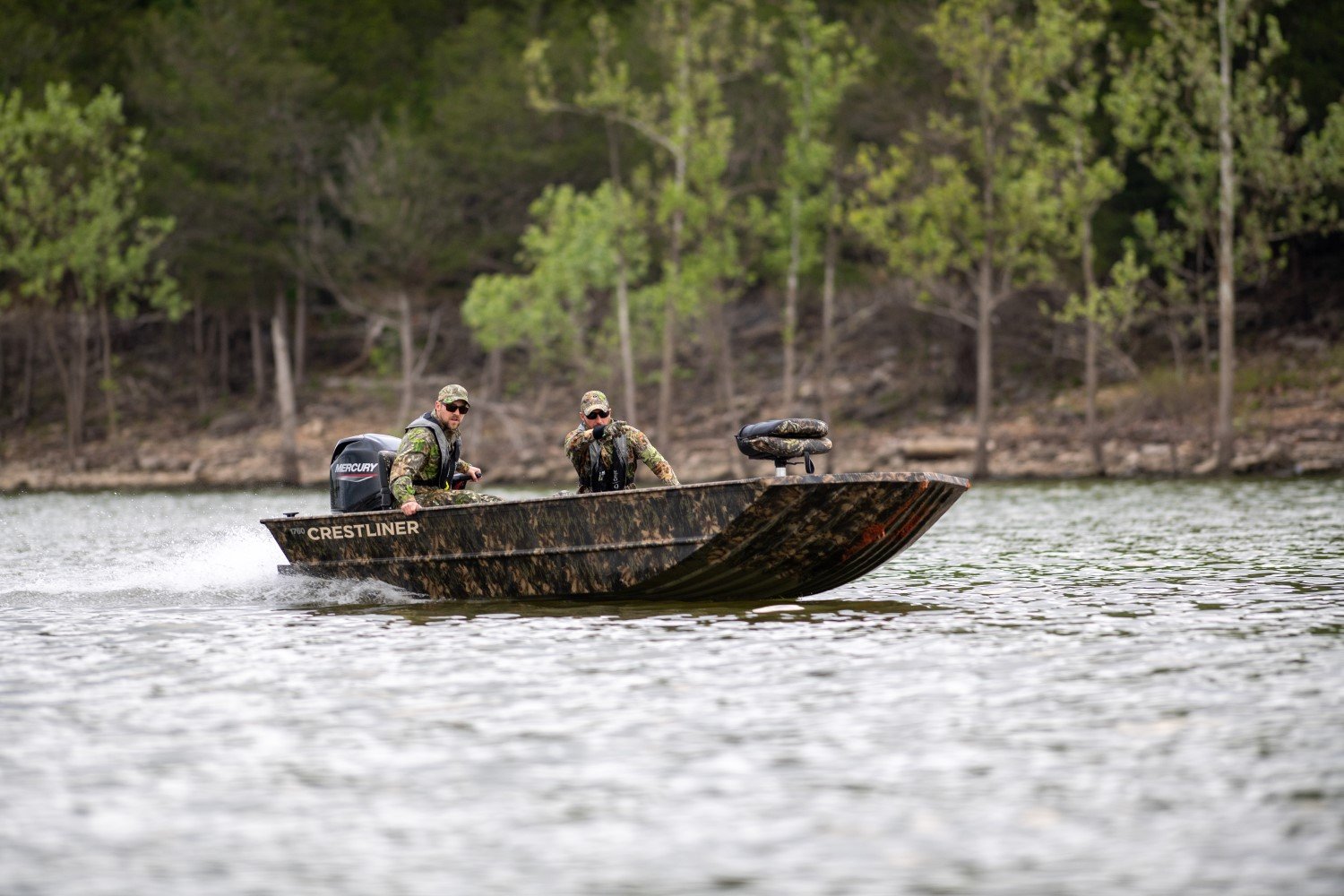
1760 RETRIEVER JON DELUXE
STARTING AT 19964
LAYOUTLENGTH 16' 10"HP RANGE 20-60SEATING 5Retriever Jon Deluxe OverviewHunt or fish, you need a hard-working jon boat that can help you snag a few trophies, and you’ll find that in the 1760 Retriever Jon Deluxe. And with the option to add the durable, low-maintenance Crestliner interior, you’ll have a boat that’s as tough on the inside as it is on the outside.
-
1860 Retriever Jon Deluxe
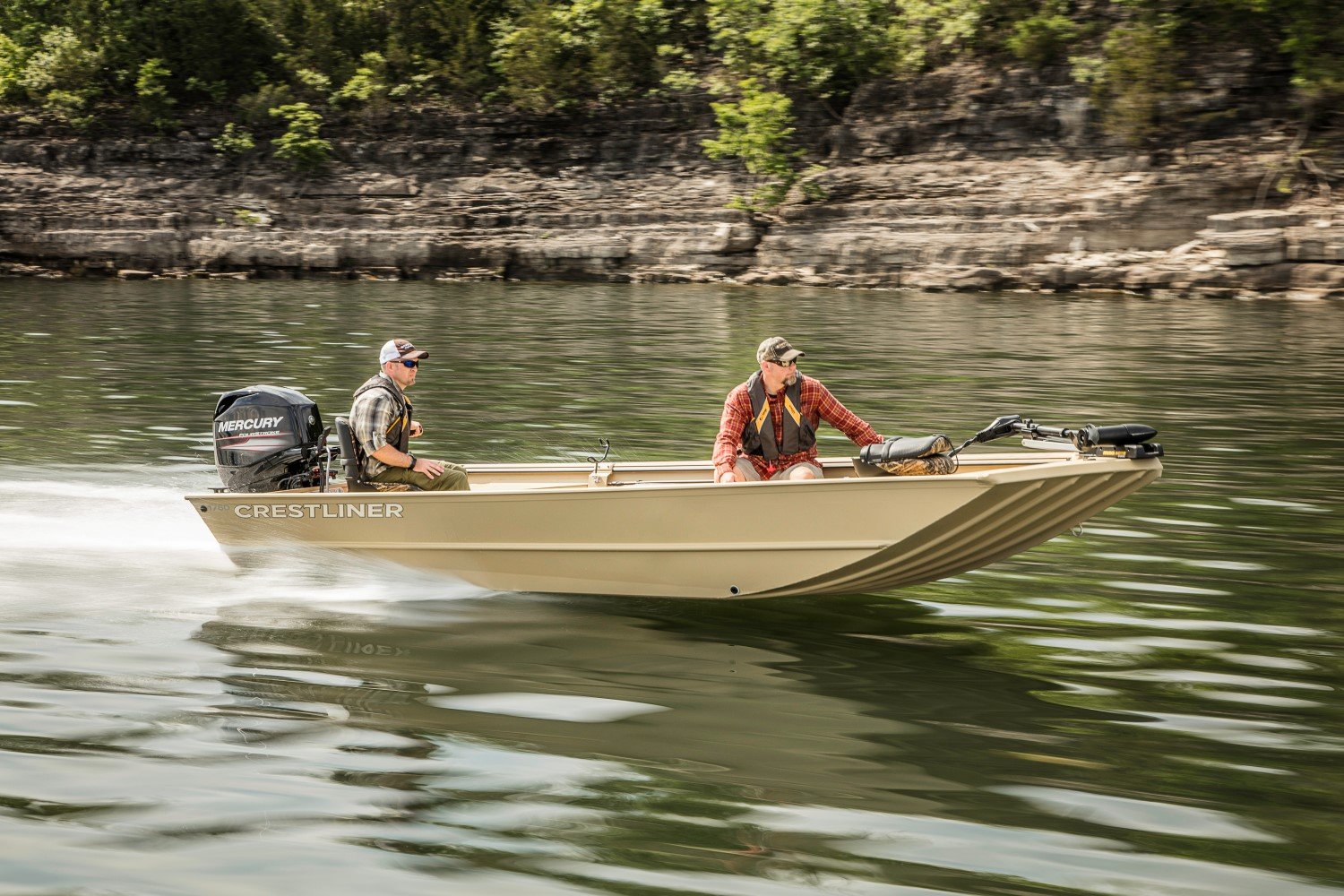
1860 RETRIEVER JON DELUXE
STARTING AT 21686
LAYOUTLENGTH 18'HP RANGE 20-75SEATING 6Retriever Jon Deluxe OverviewFrom bass fishing to duck hunting, this 18-foot tiller jon boat is the ultimate, all-welded hunting companion. Add storage, livewell, camo paint and more to make it the perfect vessel for your adventures.
-
1660 Retriever Jon Deluxe
-
CR Jon

